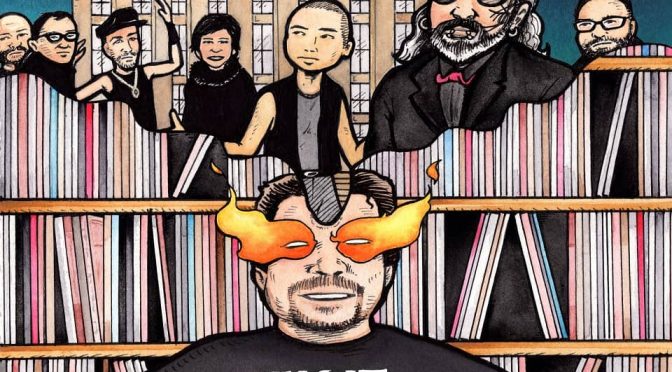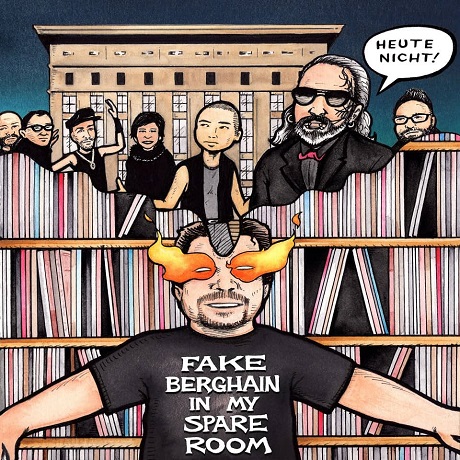
Pearsall presents Fake Berghain in my Spare Room
right-click, save as to download this free mp3 mix
Mixed in Berlin, August 2020
100% Vinyl
(215:56, 540 MB, 320 kbps mp3)
Direct link to the mix:
http://sonicrampage.org/mixes/berghain/Pearsall-FakeBerghainInMySpareRoom.mp3
Charlottenburg
Loosening up, getting started, beginning to move
- Levon Vincent – Seahorse (Novel Sound)
- Mella Dee – Exactly Mate (Warehouse Music)
- Reflective Souls – DOOM_2020 (Hard Beach Entertainment)
- Antonio – Danger (Unto)
- Dreams – Stop (Subsubtropics)
- Alien Rain – XOX 31 (Alien Rain)
- Boston 168 – Cybernetics (Odd/Even)
- Boddika – Broken Wave (Countercharge)
- Martyn – Is This Insanity? ft. Spaceape (Ben Klock Mix) (3024)
- Hezziane – Lurgan Spade (Acid Plate)
- Head High – It’s A Power Thing (Power Cut) (Power House)
- Trevino – Eclipse (Klockworks)
- Recycled – Energy (Recycled)
- John Heckle – Changes (Super Rhythm Trax)
- Moderat – Reminder (Special Request Rework) (Monkeytown)
Wilmersdorf
Throbbing electro energy
- Jensen Interceptor & Assembler Code – Otherside (Mechatronica)
- Client_03 – Suspect Dispenser (Astrophonica)
- Solid Blake – Tissue (Seilscheibenpfeiler)
- DJ Richard – Casca’s Theme (Flexxseal)
- Eel – Straight Edge (M.U.S.A.)
- Locked Club – Russian Banya (Private Persons)
- Maelstrom – Spasm (C-Know-Evil)
- L.F.T. – Chemical Confidence (Mechatronica)
- Rogue Filter – Bot Wars (Rogue Filter)
- Galaxian – Golden Armageddon (Natural Sciences)
Schoeneberg
Pumping techno, lost in a groove
- Nite Fleit – Hot Bot (Looking for Trouble)
- Fjaak – Drugs (Seilscheibenpfeiler)
- Adam X – Search & Retrieval (Sonic Groove)
- Paula Temple – Dimension Jumping (Noise Manifesto)
- Kastil – Arcanism (Falling Ethics)
- Ben Sims – Gamma Ray Subway (Deeply Rooted)
- Fadi Mohem – Take Your Time (Klockworks)
- Rob Stow – Bad Acid (Don’t)
- 999999999 – Rave 4 Love (NineTimesNine)
- Mella Dee – Heavy Coupla Weeks (Shall Not Fade)
Kreuzberg
Hard and dark and intense
- Paul Birken – From Beyond Isle Royale (TSR)
- Rebekah – Conquest (Sonic Groove)
- Hector Oaks – Cybertunnel (Oaks)
- Works Unit – Untitled (UFO Inc)
- New Frames – Totes Neon (R-Label Group)
- Nur Jaber – War Pigs (OSF)
- Remco Beekwilder – Skeemask (Emerald)
- Klangkuenstler – Balthazar (Outworld)
- Rosa Anschutz – Rigid (Kobosil 44 Rush Mix) (R-Label Group)
- Ellen Allien – La Musica Es Dios (UFO Inc)
- Janein – 1129514 (Seelen)
- Matasism – Bushido (Matasism)
- Inhalt Der Nacht – Vollmond im Kiez (Emerald)
- Dax J – Zephyr (Monnom Black)
- In Verruf – Blutsturz (R-Label Group)
- Danilo Corvaia – Kong (Scuderia)
- Randomer – Fear (Headstrong)
- Airod – Universe of 90’s Techno Parties (Molekul)
- Hadone – How to Fake Success (Taapion)
- Anetha – Virtual Ritual (Blocaus Series)
Friedrichshain
Futuristic Danish techno
- Sortlegeme – Ditchdigger (srt)
- Sugar – Vapouring Sun (Mama Told Ya)
- DJ IBON – No Love (Bunkerbauer)
- Repro – Gust of Residue (Ectotherm)
- Rune Bagge – I Am The Solution (Kulor)
- Lund & Ronde – Sus Og Dus (Bunkerbauer)
- Funeral Future – Heute Nicht (Kulor)
- Funeral Future – Blue Euphoria (Euromantic)
- Schacke – Klub Theme (Kisloty)
- Schacke – Trained to the Floor (Kaos)
Mitte
Taking it back to 2004-2006, the early years of Berghain, with some vintage funky techno
- DJ Rush – Sex Me All Nite Long (Charlie Hall Fixed Mix) (Pro-Jex)
- DJ Deeon – Lemme See Ya Work (Pro-Jex)
- John Thomas – Body’s Dance (Sino)
- Johan Bacto – Problem Groove (Zync Grooves)
- Boriqua Tribez – Puta (Primate)
- Andrew Richley & Ryan Rivera – Rumba de Barcelona (Primate)
- Technasia – Tropicalia 1 (Technasia)
- Joris Voorn – Incident (Sino)
- Killa Productions – Good Life (Mr. B Special Edit) (K.B. Records Inc.)
- Basement Jaxx – Urban Haze (Atlantic Jaxx)
Cover by Sara Gossett and Plastic Crimewave
Whenever people find out that I have been into techno for close to twenty-five years, and that I live in Berlin, one question usually follows.
“Have you ever been to Berghain?”
And the truthful answer is that I have not!
If you’re unfamiliar with Berghain (and I guess that would be something of a surprise if you’re reading this blog, but you never know), it’s possibly, or more likely probably, the most famous techno club in the world. It’s certainly the most famous (or infamous) club in Berlin.
The name Berghain is a portmanteau of Kreuzberg and Friedrichshain, two neighboring inner Berlin districts that were separated during the Cold War not only by the River Spree but also by politics, so that the former was located in the American Sector of West Berlin, while the latter was locked behind the Berlin Wall in the not-very-aptly-named German Democratic Republic (DDR).
Berghain itself is located in Friedrichshain, a short walk from the river and from Ostbahnhof, the main train station in eastern Berlin. The building itself is a massive former power station that was meticulously refurbished to turn it into a modern temple of techno, renowned for its bacchanalian all weekend parties, powerful lineups starring some of the world’s leading techno dj’s, including resident dj’s that count among the biggest names in the world of techno,a massive sound system, their fanatically enforced no-camera policy, and fearsomely strict door policies. Indeed, the lead bouncer, Sven Marquandt, is quite the Berlin celebrity, known for his uncompromising approach to door selection (as well as his barbed wire face tattoo).
Pounding techno in a raw, dark, post-industrial space?
Honestly, it sounds pretty good!
So why have I never been?
I guess there are a few main reasons, but the big one is time. It’s pretty far from where I live in Wilmersdorf, like probably close to an hour door-to-door, which then leads to the second reason, which is that I am far from sure that I would actually get in. Like let’s get real here, I’m a fat guy who works in technology, and I look and dress the part – if the goal of the door policy from what I can tell is to filter to the cool people, I’m probably not gonna make the cut. So why leave my family and my responsibilities behind to travel for an hour and then wait in a really long line, only to be told ‘leider heute nicht’ (sorry not today) when I get to the front? So, I’ve never tried!
Now, don’t get me wrong, this isn’t supposed to be a pity party – maybe I would have gotten in, I just never tried. And obviously, given the Covid-19 pandemic, this is all academic, because no one is going to be able to experience Berghain as a club any time soon …
One thing that I have always thought was pretty cool about Berghain is that the dj’s often if not usually get to play very long sets and really push themselves. Berghain might have five or six dj’s over a 24 hour period, which is a far cry from festivals and more commercial events that give everyone an hour, which is basically a perfect recipe for playing it very safe and very obvious.
I’ve always found approach quite intriguing, and would periodically wonder about what I would play if in a parallel universe I would be booked to play such a long set at Berghain. With my fortieth birthday approaching (talk about burying the lede!) I decided that it would be fun to put together a four hour mix that would be like an imaginary Berghain set, as recorded in my spare room / home office / personal mancave in Wilmersdorf.
This is an idea that I’ve been entertaining for a long time, especially since I started buying new techno on vinyl again a few years back, but it was just a vague idea for a long time, as I did not have a solution for making such a long mix interesting and diverse all the way through.
Earlier this year I had a bit of a conceptual breakthrough, which was to think of the mix as not being one single four hour session, but instead six distinct mixes that are linked together at certain hinge points, somewhat like my approach to Get It 10: Get Everything last year, where I flicked through ten distinct genres in one mix, switching every three tracks.
Even so, getting the time and space to do this mix was not a simple matter; I originally put the tracklisting together in June, but did not get a chance to record it until August, when my wife and kids went away for a week on a little vacation and I was home alone and thus had the time and space to record. Even so, I ended up recording this mix over four nights in distinct chunks, starting Monday and ending Thursday, before stitching it together on Thursday night in Soundforge.
This is that mix, and I am delighted with it. It’s really a personal magnum opus, and it’s something that I am hugely proud of. Even though I recorded it in early August, I decided to hold it back until now in order to release it to celebrate my fortieth birthday yesterday, because I like the synchronicity of dropping a four hour mix on my fortieth birthday. This has meant that I have had two months of privately enjoying this mix before I get to share this with the world, and also two months in which to commission the cover to this mix, which has been made by the very talented Sara Gossett and Plastic Crimewave, who delivered beautifully on the concept I gave them. As you can see, I’m in front of my records, daydreaming of Berghain, being told no by Sven, who is surrounded by a number of my old friends in full Berlin techno-hipster attire.
So as mentioned earlier this is both one whole mix, and also six smaller mixes that logically flow into each other. Each section is named after a specific Berlin district, following a path from west to east through inner Berlin. Each section has a specific vibe and theme, and I also wanted to make sure that sprinkled throughout the mix there were many connections to both Berghain and to Berlin in general, in terms of the artists and labels featured.
Having finished recording the mix on Thursday 6th August, I then set out the next day, Friday the 7th, on an epic walk (ok, well epic enough for me) to trace the path between the six different districts that the mix sections are named after. I’m someone who has always loved long walks, so for me this was a very rare treat, because now with my work and family responsibilities I generally don’t get an opportunity to take such long walks. I mean, this was probably the first day off I’ve taken just for me in like six or seven years!
So this was a long overdue treat!
However, the fact that this was a day where the high temperature was 34C (93F) meant that walking so far was maybe not the most brilliant idea I’ve ever had, but having though of it, I was determined to do it. Also, I decided that I would document the journey, by setting a timer and taking a photo every ten minutes in order to show my surroundings. Taken together, they provide a nice visual diary of Berlin on a hot summer day.
So the blog post below is kind of a weird mashup of a travelogue, a love letter to Berlin, and a somewhat anal retentive discourse on the process involved in making such a large and complex mix. I’ve split it up into the relevant sections by district, with the photos I took, a description of my journey, and then a discussion of the music I used.
This map shows the route I took:
Without further ado, off we go …
Charlottenburg
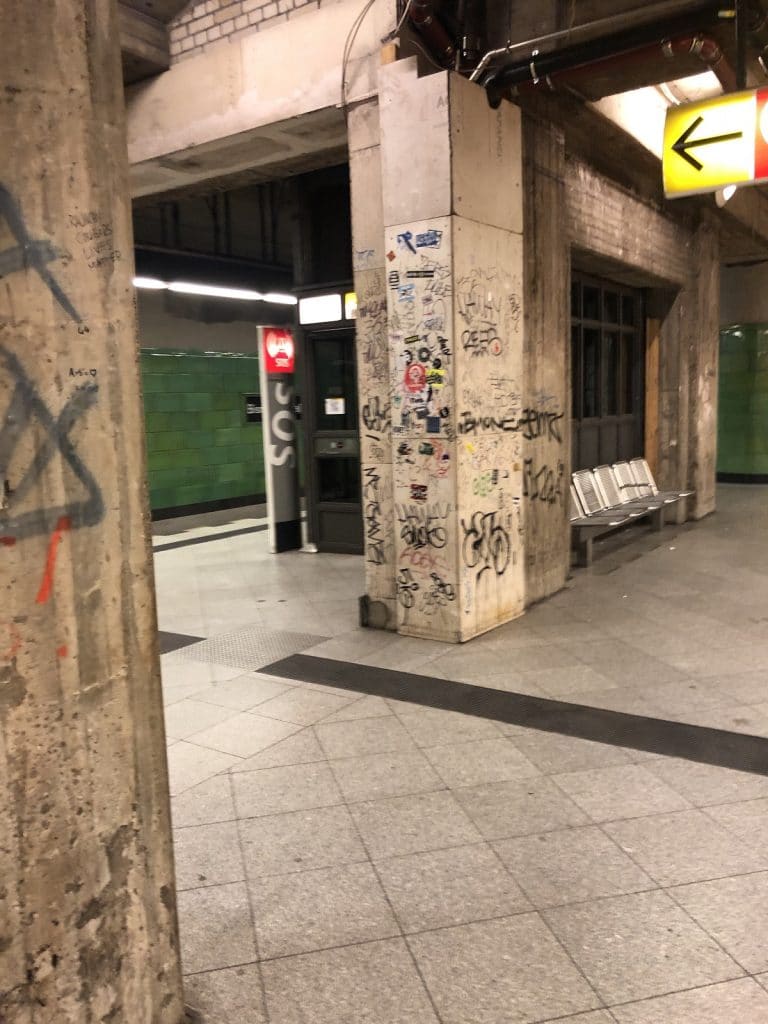
After a lazy morning I hopped on the U7 and journeyed a few stations to the north to Charlottenburg, alighting from the train at U-Bismarckstrasse.
Charlottenburg is an historically affluent district that was the center of Cold War-era West Berlin. It’s still one of the wealthier areas of inner Berlin (although perhaps Mitte and Prenzlauer Berg are now pricier), and it is also one of the centers of Berlin’s massive Russian population. For those who don’t know, Russians are one of the three biggest groups of foreigners in Berlin, alongside Poles and Turks, and it’s very common to hear Russian spoken in the streets.
My walking route started by leaving the station on Wilmersdorfer Strasse at the exit north of Bismarckstrasse and then crossing the street itself, a massive avenue that allows you to look east all the way to the Siegesaule in the middle of Tierpark. Wilmersdorfer Strasse is a shopping street that is, frankly, a little boring, although it does contain the mighty Rogacki, a venerable Berlin food institution, where you can get very fine fresh meat, fish, and cheese in the front, and then buy prepared food in the bac. I recommend digging in to the fantastic smoked fish selection.
Don’t believe me? Trust Anthony Bourdain instead:
Under normal circumstances I would have hit up Rogacki for lunch as it was already after 12, but I had been dawdling so much in the morning that I really wanted to get my journey started, so I made the decision to get to Schoeneberg first before stopping for lunch. Thus I continued south on Wilmersdorfer Strasse until I reached Pestalozzistrasse, where I turned left to get off the main road and roam through the side streets for a bit before turning south again to hit Kantstrasse. Kantstrasse is one of my favorite streets in Berlin. It’s a big wide street, framed mostly with grand older apartment buildings, and lined with great restaurants. It’s particularly known for housing some of Berlin’s best Asian restaurants, especially the numerous spots that form the heart of Vietnamese-German chef The Duc Ngo’s restaurant empire. My wife and I have been to Kantstrasse many times for date nights – it’s a perfect place to get a meal, a drink, and have a nice walk.
However this was not a day to take a leisurely lunch. I wasa man on a mission! Therefore my only stop on Kantstrasse was at Saftpresse Charlottenburg to get some fresh-pressed juice, a necessity on a day where the temperature had already passed 30 degrees Celcius. Suitably refreshed, I continued down Kantstrasse before heading south at S-Savigny Platz, crossing over Ku’damm on my way to Wilmersdorf.
If you’re not familiar with Berlin, Kurfuerstendamm (or Ku’Damm for short) is probably THE most famous shopping street in the whole city. It is a grand tree-lined avenue that stretches for several kilometers across west Berlin from Halensee to the famous KaDeWe department store. Lined with designer stores, cafes and restaurants, it is very much different from Berlin’s ‘arm aber sexy’ (‘poor but sexy’) image.
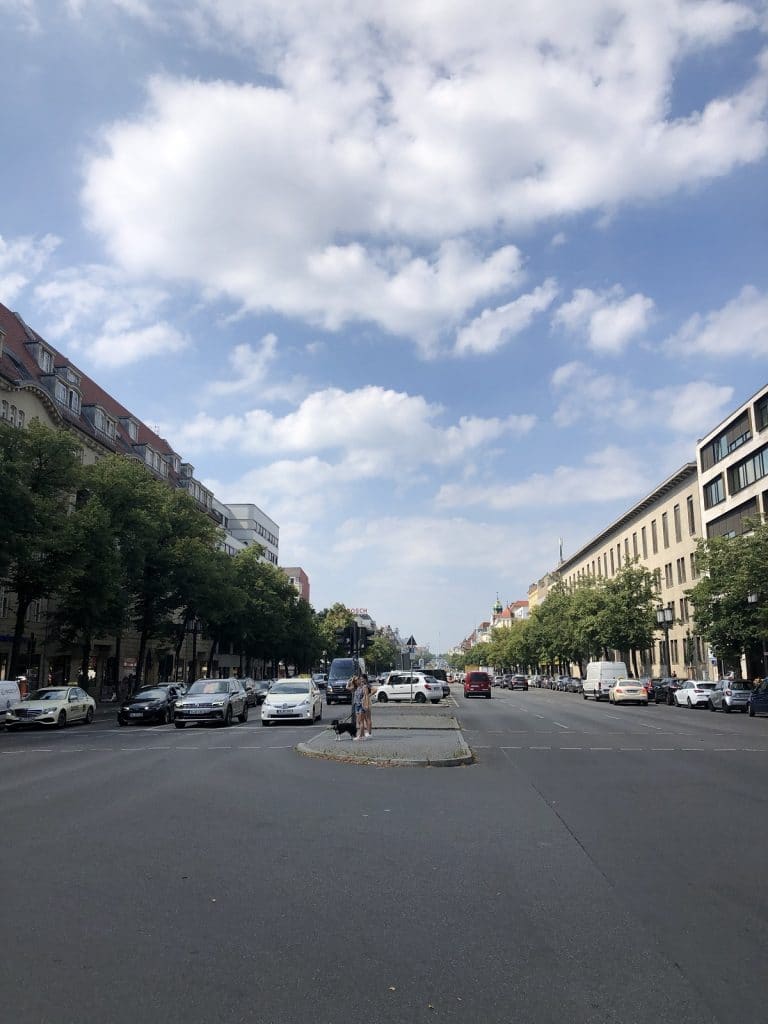
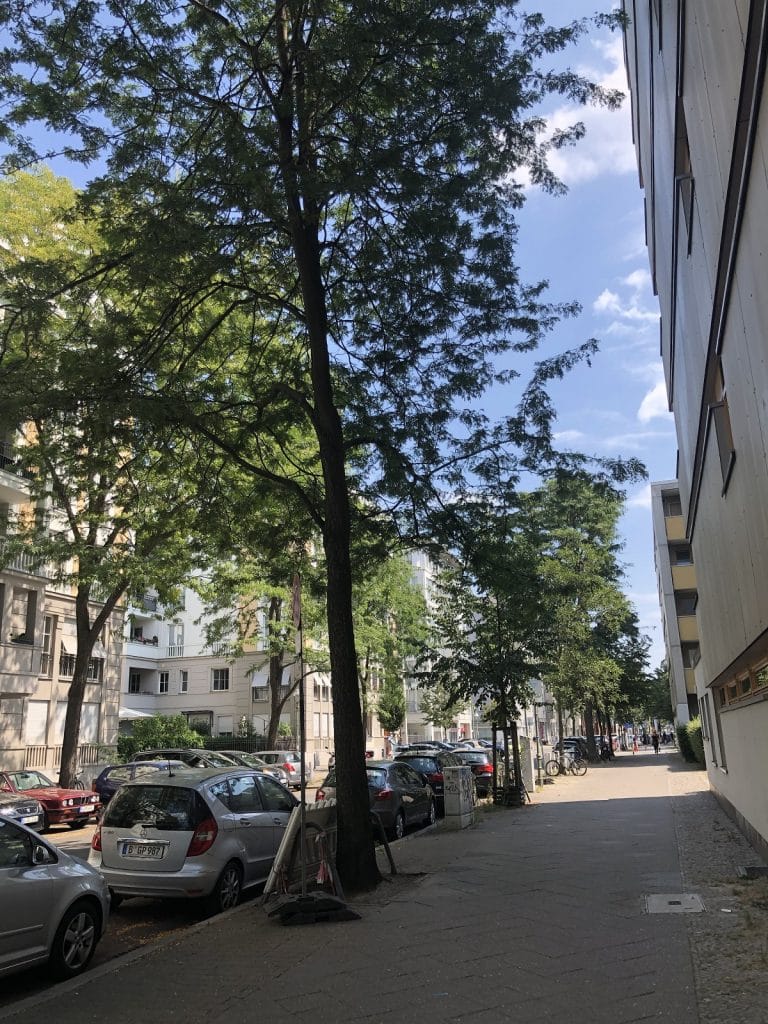
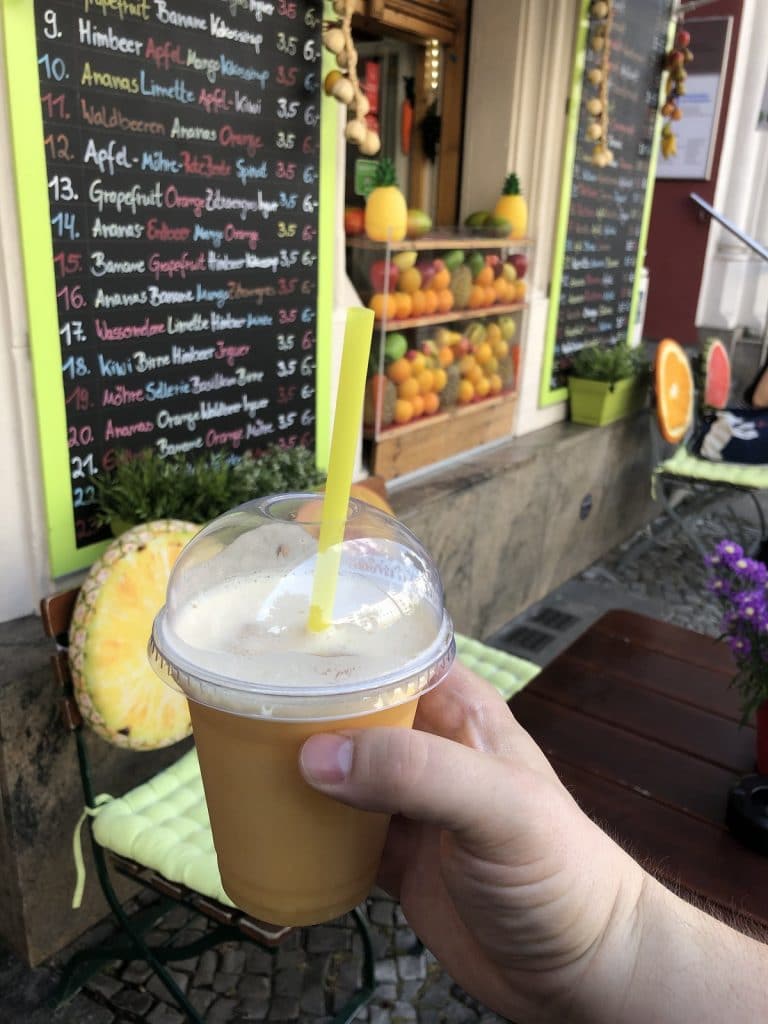
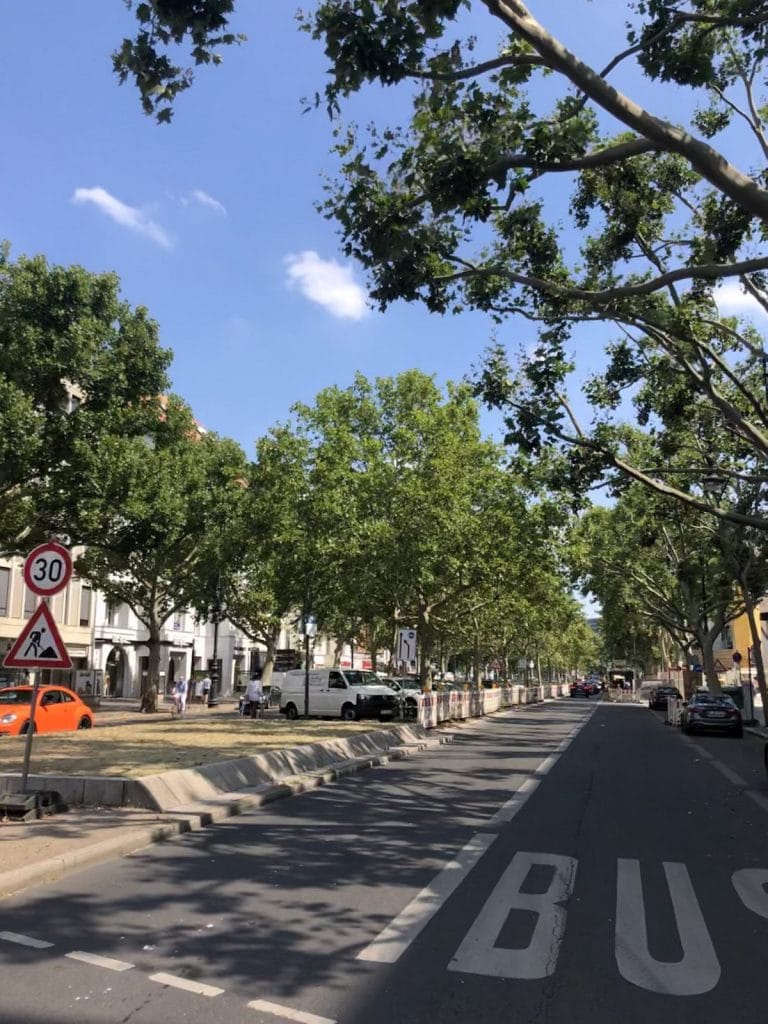
So what’s happening in the Charlottenburg section of the mix?
With four hours in play, I wanted to make sure that the opening section was an appropriate warmup, that it would set the scene, loosen up the listener, start the journey. I really wanted to avoid jumping straight to ruthless hammering techno.
Although I was tempted!
Thus my decision was to start things off a bit slower, a bit closer to what I would imagine would be played at the Panorama Bar, Berghain’s more house-oriented second dancefloor. Which is why I kick things off at a stately 122 bpm with a track from Panorama Bar favorite Levon Vincent, another native New Yorker who has found himself living in Berlin. All twinkly synths and trudging beats, it merges seamlessly into a similar track from Mella Dee (and big up Mella Dee, what a producer), before broadening out to ‘DOOM_2020’ from Reflective Souls, where a classic Kevin Saunderson bassline rips open the curtains of your consciousness.
From there I slightly switched it up with two more aggressive tracks from Antonio and Dreams, frenetic noise over slow chugging kicks, which bridge into hypnotic minimal acid from Berlin’s Alien Rain and the Italian duo Boston 168, thrumming machine psychedelia that then cracks apart with the minimal broken beat techno of Boddika’s ‘Broken Wave’, all stuttering drums and washed-out white noise.
After lulling the listener into a hypnotic state, the moment was right to flip a switch and intensify the experience, with Berghain resident Ben Klock’s classic remix of Martyn’s ‘Is This Insanity?’, spoken word dub poetry riding a pulsing, bass-heavy beat, switching upwards into pounding acid from Hezziane, the new(ish) acid alter ego of dubstep legend J:Kenzo. The next three tracks bring it back to Berlin, first with a 2010 track from Head High, an alias of the legendary Rene Pawlowitz, aka Shed and like a dozen other aliases. The a-side of this release, ‘It’s a Love Thing (Piano Invasion)’ is probably the more famous one, but I really love the unadulterated dancefloor energy of ‘It’s a Power Thing’. Even ten years after release it still kicks.
Next up after that is a mixing of two of my lifelong musical loves, with much loved and much missed Mancunian drum n’ bass legend Marcus Intalex dropping the killer ‘Eclipse’ on Ben Klock’s own Klockworks label, all warm bass, crunchy breaks and lush Detroit synths.
UK drum n’ bass vs Berlin techno? Yes please!
After that it’s back to some more classic techno sounds from Recycled, which is I believe to be yet another alias from Rene Pawlowitz, a bridge-builder before the swinging euphoric chords of ‘Changes’, by Irishman John Heckle on Jerome Hill’s very crucial Super Rhythm Trax label. The last track in this section, appropriately, is another UK and Berlin meeting point, with the awesome Special Request remix of ‘Reminder’ by Moderat, the collaboration of Berlin artists Modeselektor and Apparat, where Paul Woolford expertly combines the original track’s sharp, clean Berlin techno style and haunting vocal with a big dash of UK flavor – heavy bass, thumping kick, crashing breakbeats.
Wilmersdorf
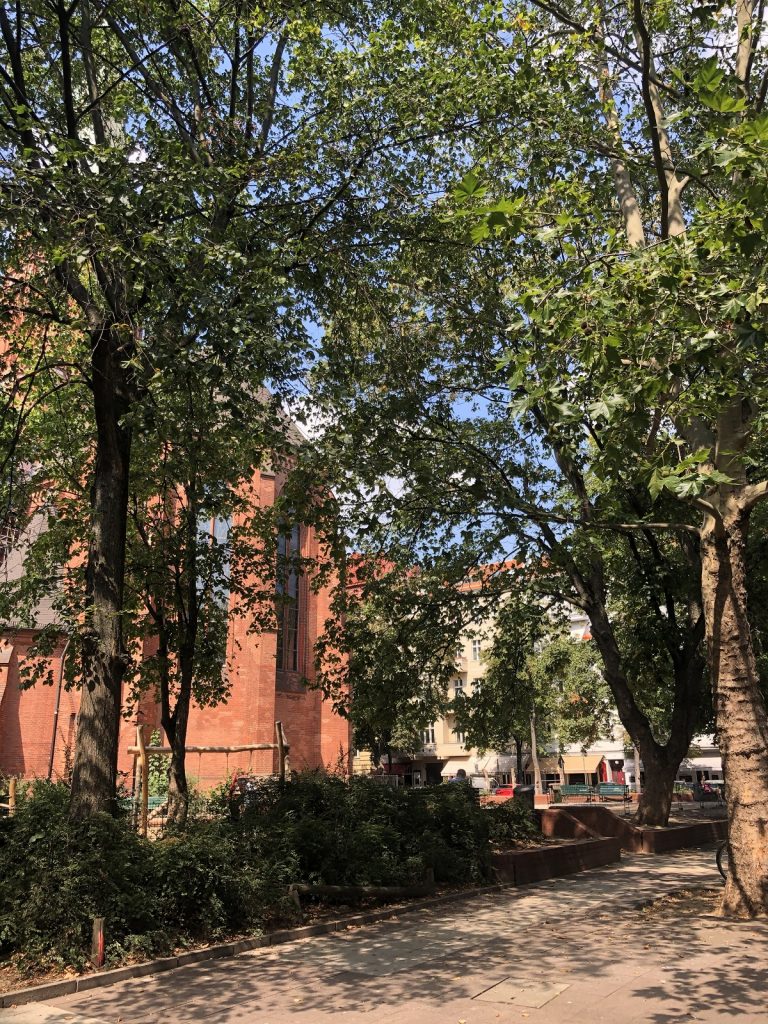
Heading south from Ku’Damm I crossed over briefly into Wilmersdorf, where I live with my family. Wilmersdorf is another traditionally afflluent West Berlin district, although it is quieter, more residential, and not as wealthy as Charlottenburg.
Honestly, I love living in Wilmersdorf – it’s a great place to be with children. We live near the Volkspark Wilmersdorf, the transport connections are good, it’s safe, it’s quiet, and it’s generally very pleasant. It doesn’t have the same restaurant choices as some of the other inner Berlin districts, but that is improving over time, and it’s just a very nice quality of life. It’s not really so well known among tourists, but that’s fine with me.
Because Wilmersdorf is long and thin, my walk took me only across the northeastern corner of the district, turning down Uhlandstrasse, and then heading east on Guentzelstrasse, one of Wilmersdorf’s main east-west shopping streets, before crossing Bundesallee and crossing into Schoeneberg as I moved east. I was in and out of Wilmersdorf in less than twenty minutes.
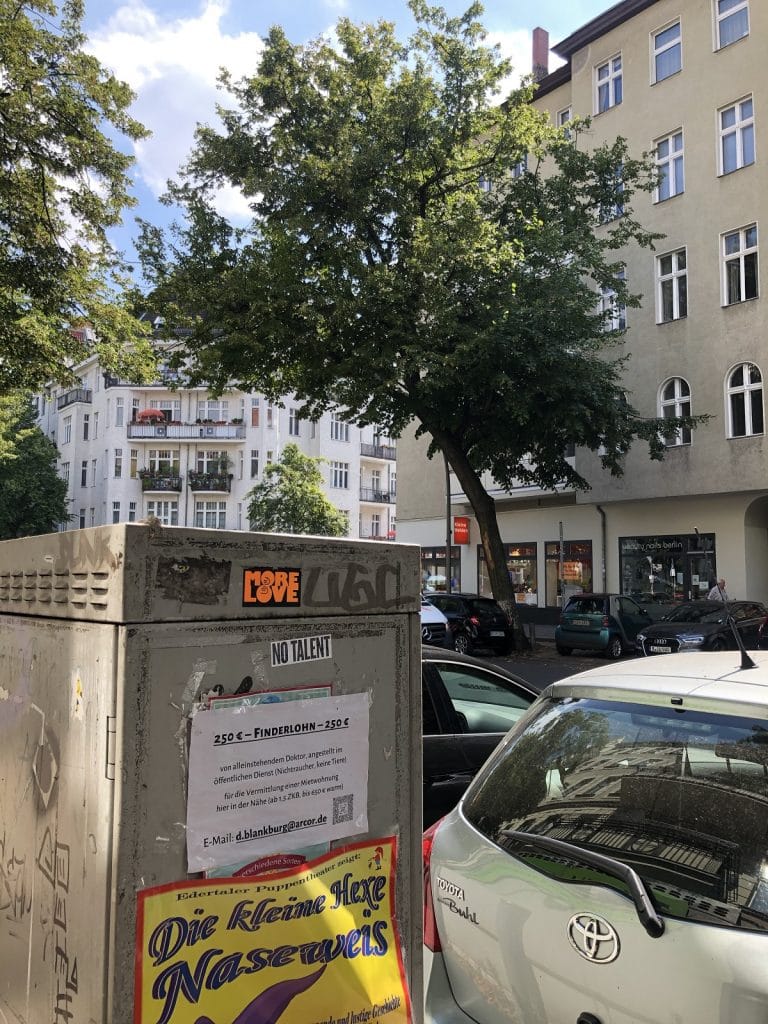
The second section of the mix is a little bit of a curveball, maybe a bit against expectations, as I switched into ten tracks of electro.
A quote-unquote ‘Berghain mix’ has gotta be wall-to-wall techno, right?
Well, not in this case!
In recent years I’ve gotten back into electro in a big way as a result of supporting my friend Casper’s Mechatronica crew via their parties and releases, so I wanted to make sure that the mix had a section that properly reflected the recent electro resurgence in Berlin and further afield in Europe.
This means that besides the two Mechatronica tracks I’ve used (courtesy of Jensen Interceptor & Assembler Code and L.F.T.), I’ve also dropped some choice tunes from a mix of producers, such as Scotland’s Solid Blake, Russia’s Locked Club, American Berliner DJ Richard, Barcelona-based Argentine Eel, and the presumably English Rogue Filter and Client_03. This section isn’t so precisely sculpted as the first one, but I did aim it at climaxing with the glorious deep space journey ‘Golden Armageddon’ by Glaswegian electro don Galaxian. I’m not even sure it’s a dancefloor record per se, as it’s so, like, overwhelming. Honestly if I heard it on a big rig I would just stand there and shiver like a jellyfish on a mountaintop. Pure emotion and synthesizer overload. It’s incredible!
Schoeneberg
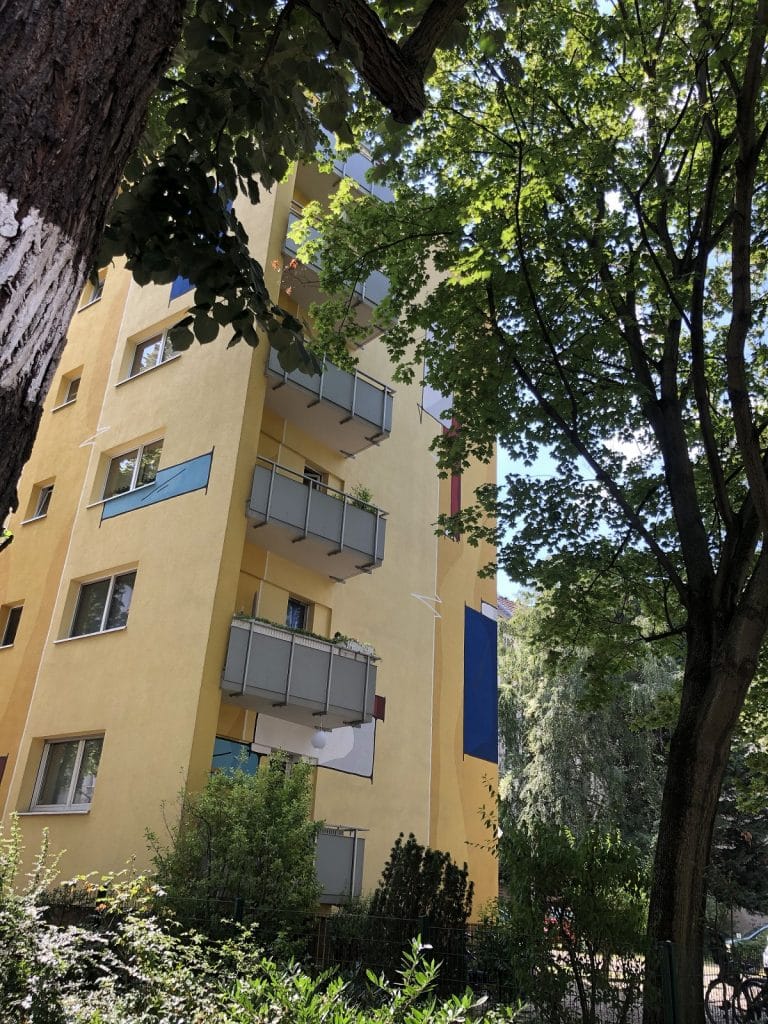
Continuing east on Guentzelstrasse I passed through to Schoeneberg at Prinzregentstrasse.
Schoeneberg is quite a big district, and in my opinion one of the most interesting parts of Berlin, as it’s really a microcosm of (western) Berlin. It’s just such a varied area! It has the city’s longest-established gay neighborhood in the streets around Nollendorfplatz, where ageing queens hold court on sidewalk cafes, it has the fully bourgeois area that radiates out from Akazienstrasse, all fancy cofee shops and battleship-sized strollers. There’s a big working class area in the north of the district, with large public housing blocks and a huge Turkish community, and of course many many good restaurants as a result of said community. There are streets filled with stunningly beautiful old apartment buildings, and others filled with forgettable 1960’s concrete cubes. There is the red light district around Kurfuerstenstrasse. There’s the local town hall where John F Kennedy made his famous ‘Ich bin ein Berliner’ speech. There are theatres, cinemas, restaurants of all shapes and price points, fancy cocktail bars, grubby smoke-filled haunts filled with ageing alcoholics, gay sex shops, tiny mosques, decades-old family businesses, freshly minted hipster hangouts, imposing red brick churches, historical sites, record stores, street markets, boring chains, calm parks, fantastic specialist stores like the Rum Depot or the Greek supermarket around the corner from the Rathaus, and, really, everything.
Schoeneberg is just a great example of why people love urban living. It’s a hugely varied place filled with a hugely varied mix of people from all over the world. There’s a lot to do, a lot to discover, and all of it concentrated in a small area.
Honestly, it’s a really interesting area, and one that I really like. I mean it’s not all nice, some of it is pretty ugly, but that’s part of the charm. So as I continued east on Guentzelstrasse I was conscious of the fact that I was getting pretty hungry, so after crossing over the (epicly ugly) north-south artery Martin-Luther-Strasse I angled myself towards Goltzstrasse, a beautiful street lined with restaurants, cafes, and shops, and sat down for a delicious lunch of kofta, bulgur, and grilled peppers at the Turkish restaurant Meyan.
If you’re a fan of Turkish food, as I am, Berlin is a fantastic place to be, as it has the largest Turkish population of any city in the world outside of Turkey itself. Personally I love their food, and I put them at number two in the Mediterranean, behind only the Italians. One thing that’s always perplexed me, though, is that even though there must be at least a thousand humble Doenerladen dotted around the city, there just aren’t that many proper Turkish restaurants, or at least fewer than you would expect, given the sheer size of the Turkish population. It’s an interesting mystery – this is such a varied cuisine, yet most ‘Turkish’ places in Berlin just serve the same handful of meaty and greasy dishes. I mean, don’t get me wrong, I love a good kebab too (shout out Imren in particular), but there’s a lot more to Turkish food than rotating meat logs! Anyways, I think this will change over time as more people open places like Meyan that serve a wider range of dishes.
Stomach suitably fortified, I left Meyan continued around the corner to Pallasstrasse, a street that is most notable for the bizarre and fascinating Pallasseum, a 1960’s public housing block that straddles the street and on its southern edge is built on top of a Nazi era bunker that was built so solidly that it could not be dismantled safely, so they simply used it as a pillar for the housing block.
Crossing Potsdamer Strasse, I then swung a left on to Steinmetzstrasse, a sheltered semi-pedestrian street that funnels you up towards Buelowstrasse, a drab street that functions both as the biggest street art gallery in Berlin (see the example I captured below as I was crossing the street), as well as part of the red light district around Kurfuerstenstrasse. Interestingly enough, back in the 1980’s the Buelowstrasse station, today a part of the U2 line, was used as a giant bazaar by the local Turkish community as it was close to the wall and there were few passengers so the city authorities simply closed the station.
I then walked north a few more streets, and then swung to the right to enter the Gleisdreieck park, a beautiful park built over a disused railway year. By this point the sun was broilingly intense and I could already feel the first blisters swelling up on my feet.
Was it a smart idea to do this walk in white athletic socks? No, it definitely was not. In fact it was a really really stupid idea, as I was coming to realize.
Not that I was giving up yet.
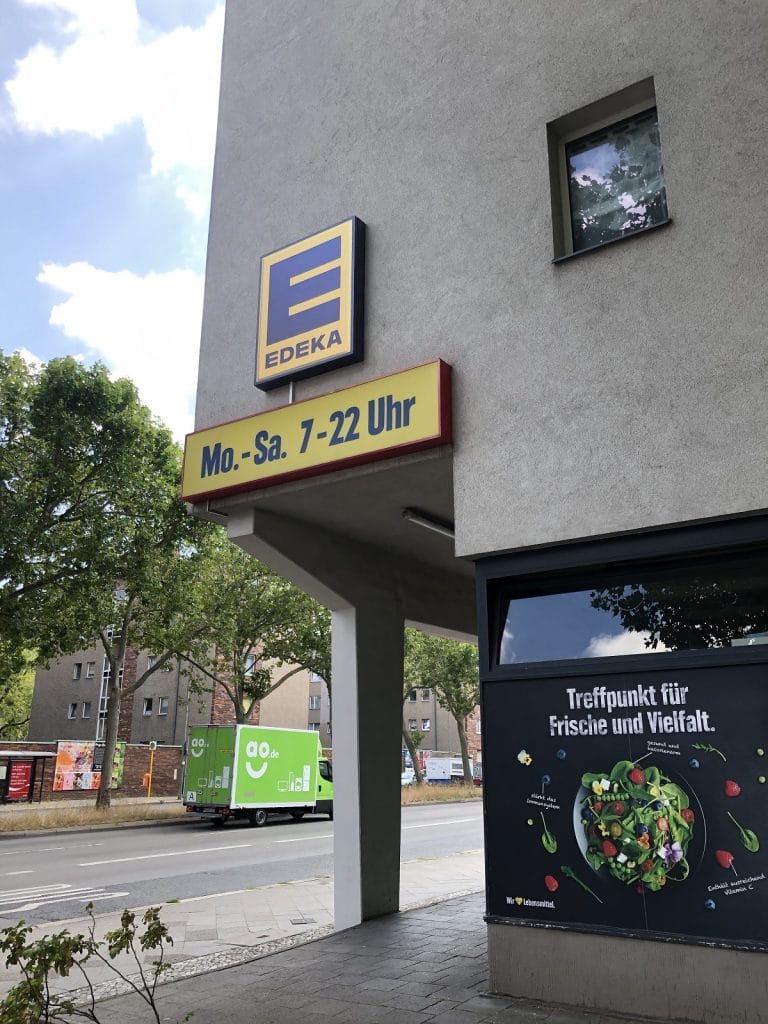
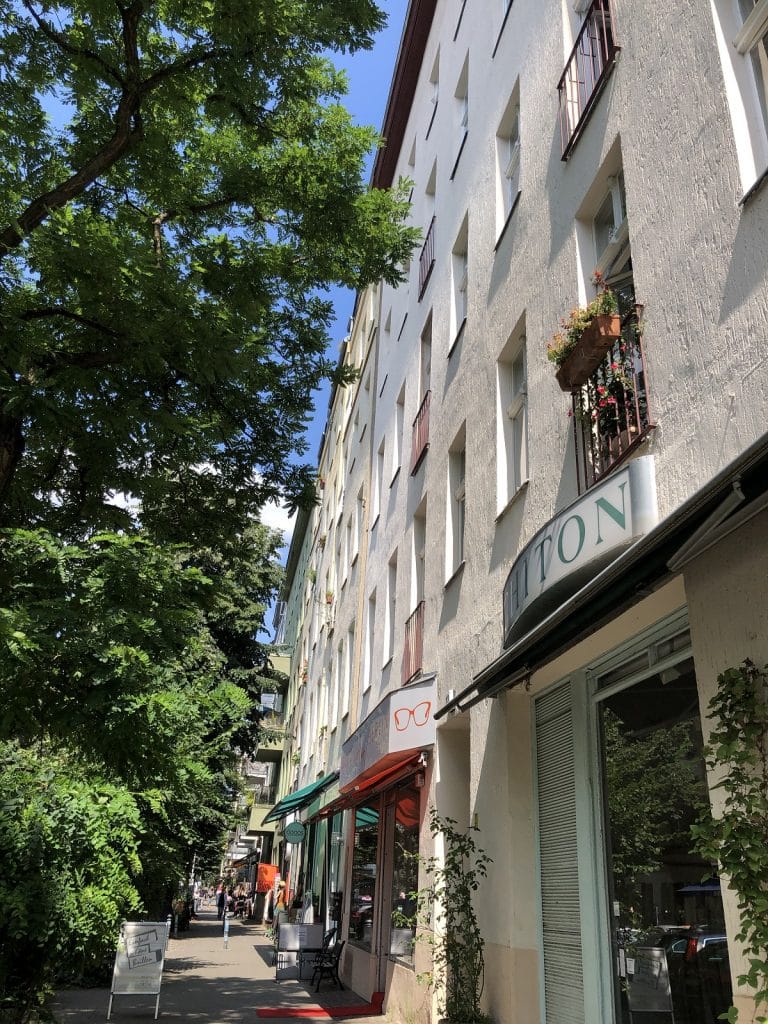
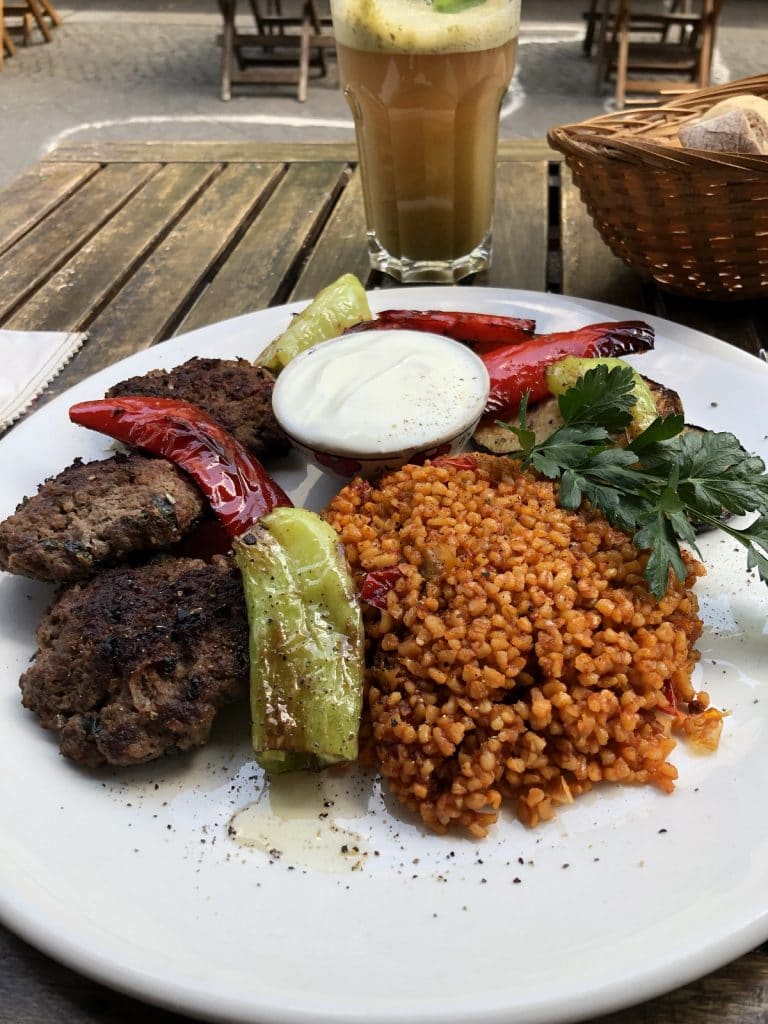
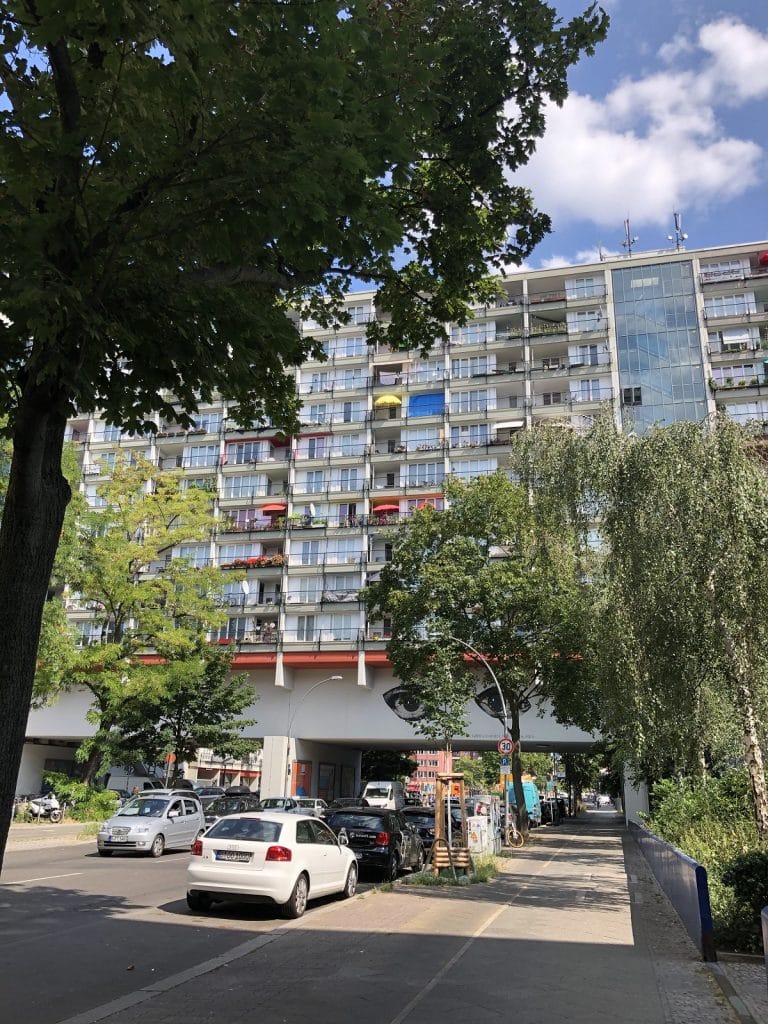
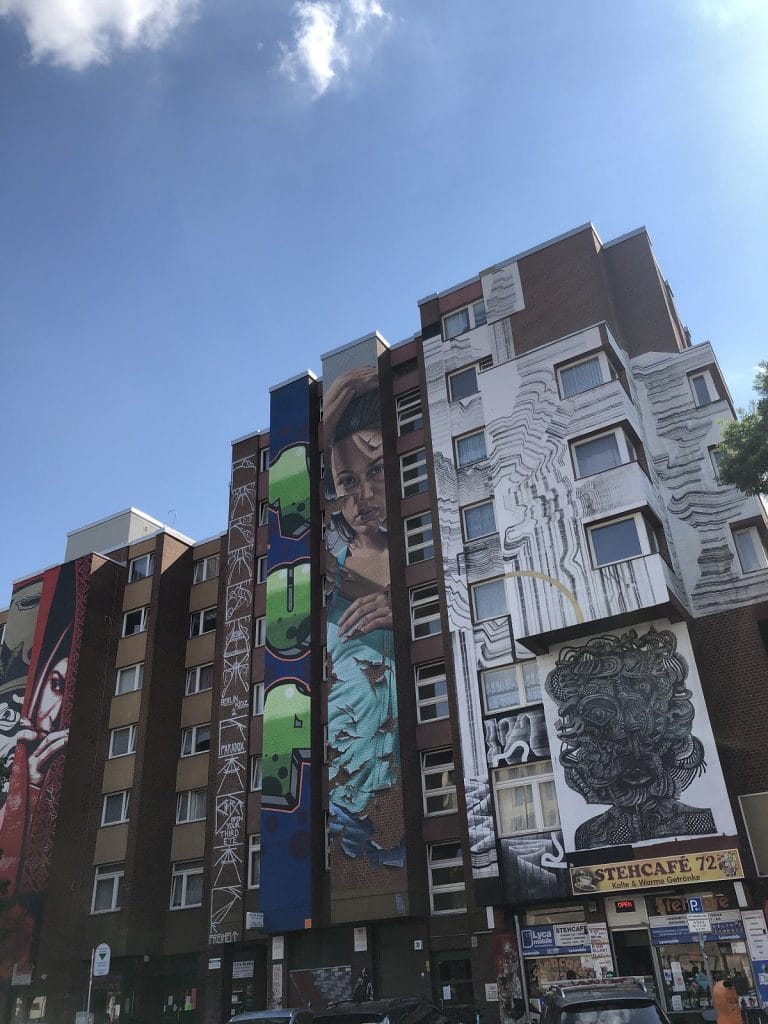
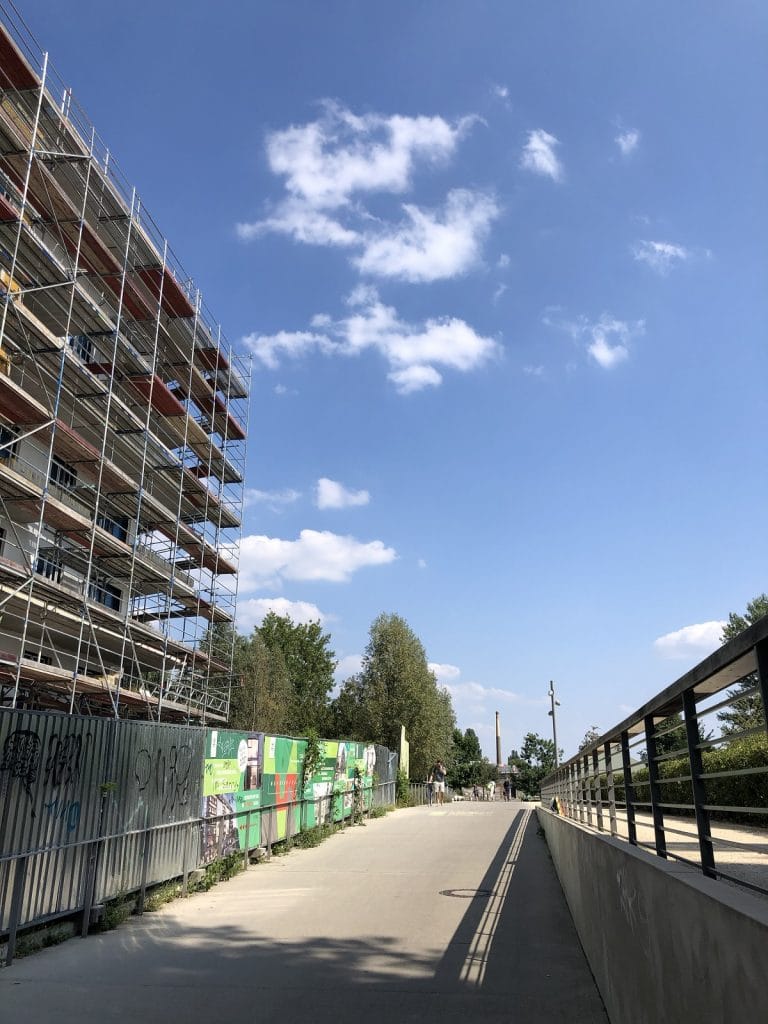
The third section of the mix was a little trickier to define than the first two, because I wanted it to serve as a bridge between electro and the really hard, dark and pounding techno that I planned for the main section of the mix.
So how to make this transition between two very distinct styles while maintaining an identity of its own?
My solution was to make a quick progression over those ten tracks, while keeping to what I would consider to be very much a prime time techno sound, a sound to animate a full dancefloor and get everyone moving. So the section begins with a bit of fierce electro techno from Australian producer Nite Fleit (one of my favorite new producers of recent years, for what it’s worth), whose ‘Hot Bot’ is a pounding exit from the spaced-out conclusion to the previous section.
I then quickly follow this up with the ultra-percussive ‘Drugs’ by Spandau’s dynamic duo Fjaak, then into two slightly spacier techno workouts from Brooklyn original Adam X (now a Berliner, of course) and Paula Temple, before switching direction to classic dancefloor techno, all driving bass and shimmering stabs, from artists like Ben Sims, Fadi Mohem, Kastil, 999999999, before concluding things with Mella Dee’s endearingly wonky workout ‘Heavy Coupla Weeks’.
Kreuzberg
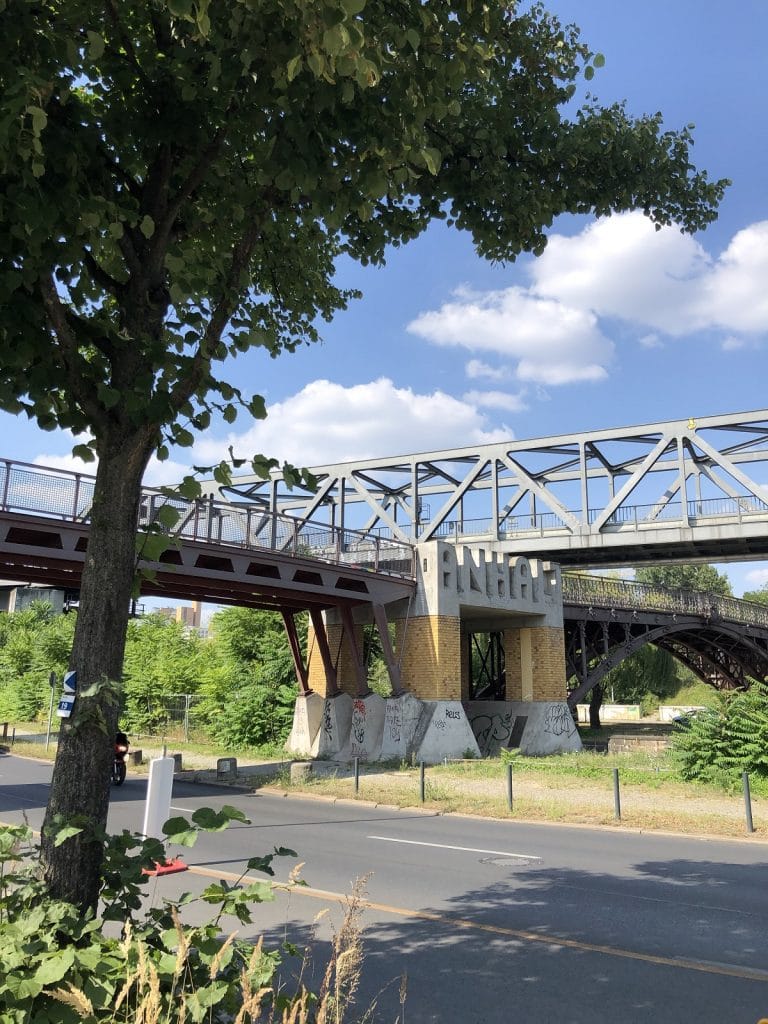
Fittingly enough, the longest part of the mix mirrors the longest part of my journey, as I cut across Kreuzberg and headed towards the River Spree.
When people think about Berlin, their mental image probably approximates to something like Kreuzberg. During the Cold War era it was a relative backwater in West Berlin, hard up against the Wall and far from the city center around Charlottenburg and Tiergarten. It became known as a center of the Turkish immigrant population as well as home to squatters, anarchists, and general malcontents of all stripes, a situation assisted by Berlin’s unique status as a little island of West Germany in the sea of the nightmarish police state that was the DDR. Berlin residents had the unique privilege of not having to serve in the Bundeswehr, the West German armed forces, so naturally over time it attracted a big population of dissidents and non-conformists, many of whom settled in Kreuzberg, hidden well away from the bright lights of Ku’Damm.
For anyone interested in the West Berlin counterculture in the final years of the Wall, I highly recommend the amazing documentary B-Movie: Lust & Sound in West Berlin:
Kreuzberg’s status as capital of marginalia was really a historical quirk, as location-wise it is straight south of the traditional heart of the city, Mitte, which has meant that as Mitte itself was revitalized and transformed after reunification, so Kreuzberg’s proximity to Mitte has come to be a valuable calling card, kicking off a process of gentrification that has snowballed in recent years such that parts of Kreuzberg are now among the priciest in the city, and new rental contracts in some of the hippest areas like the Bergmannkiez or the Wrangelkiez now routinely exceed traditionally much wealthier areas like Charlottenburg or Wilmersdorf. Even so, parts of the district still rank among the city’s poorest, and hard drug use is rampant and in your face in some parts of Kreuzberg.
My journey across Kreuzberg started at the other side of Gleisdreieck, as I walked the short distance to the Landwehr Kanal. By this point the sun was extremely intense, so after a brief period of walking along the side of the canal, I decided it was best to switch to a side street. This was because the Gitschiner Strasse (which becomes Skalitzer Strasse a bit further on) has only a brief shaded section before being totally exposed all the way east to the river. Since I basically have two skin tones – corpse and lobster – I figured that walking such a long distance on such a hot day on a street with no shade was just an all-time dumb idea.
So I didn’t!
Instead I got off Gitschiner Strasse and then zig-zagged along the side streets, passing new construction and aging 60’s concrete hulks equally, until I reached the Prinzenstrasse, a still firmly working-class and heavily Turkish and Arabic street, where I briefly went north, bobbing through the families out for a stroll, before zig-zagging again through the side streets until I reached Oranienplatz, a nice little park about half-way down Oranienburger Strasse. That street has really come to be the heart of hipster Kreuzberg, all loud bars and fusion restaurants. In a more normal year such a place on a summer afternoon would already be thronged with a global collection of party tourists, but this is far from a normal year, so it was pretty quiet.
Heading north-east towards the river, I had the brilliant idea to go to the park by the Mariannenkirche and sit down for a few minutes, but when I got there all the benches were occupied by junkies and the grass itself was more of a rumor than a reality, the ground basically dry compacted dirt, so I milled around for a couple of minutes looking for a halfway decent spot to rest and then sighed deeply, giving up and trudging on.
At 16:21, just over four hours since setting off I was finally at the river. My feet were absolutely killing me, the blisters having grown to an absurd size, and my shirt was very sweaty. The temperature was something farcical like 34c and I was exhausted, stinky, and in pain.
But I was almost there!
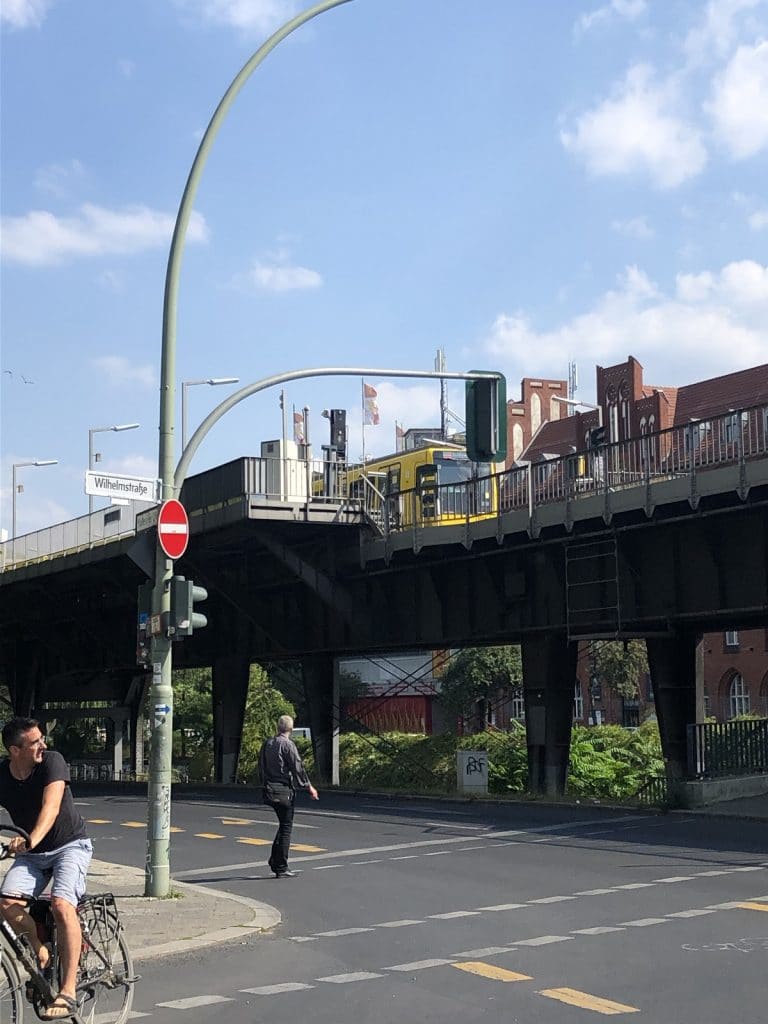
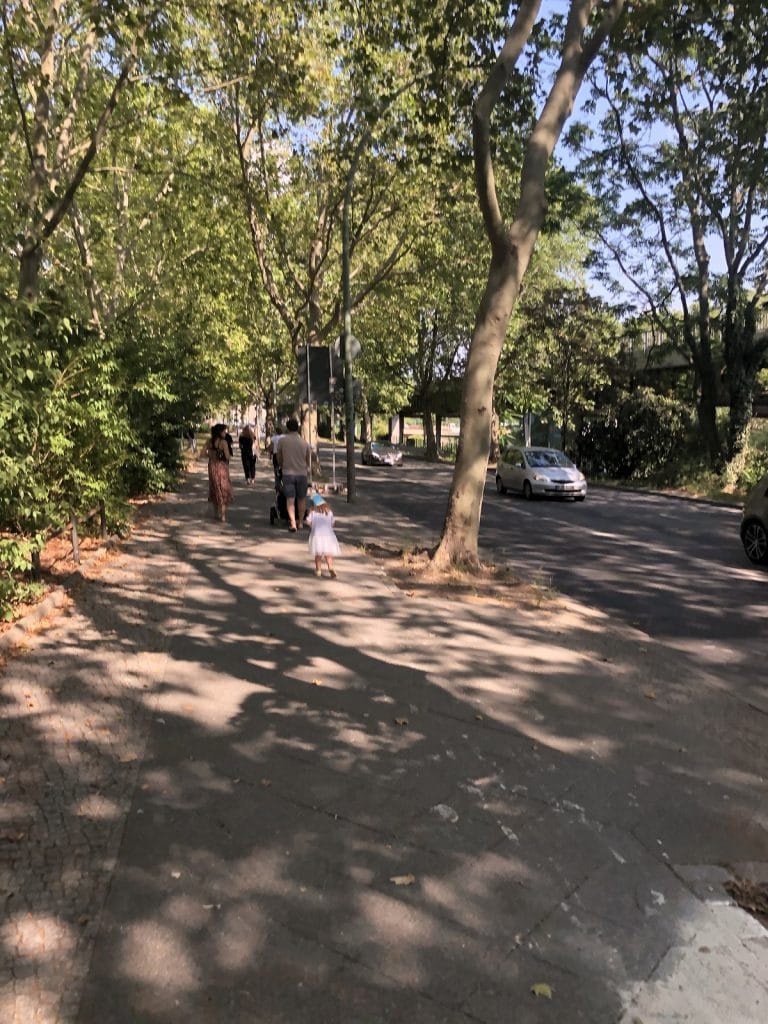
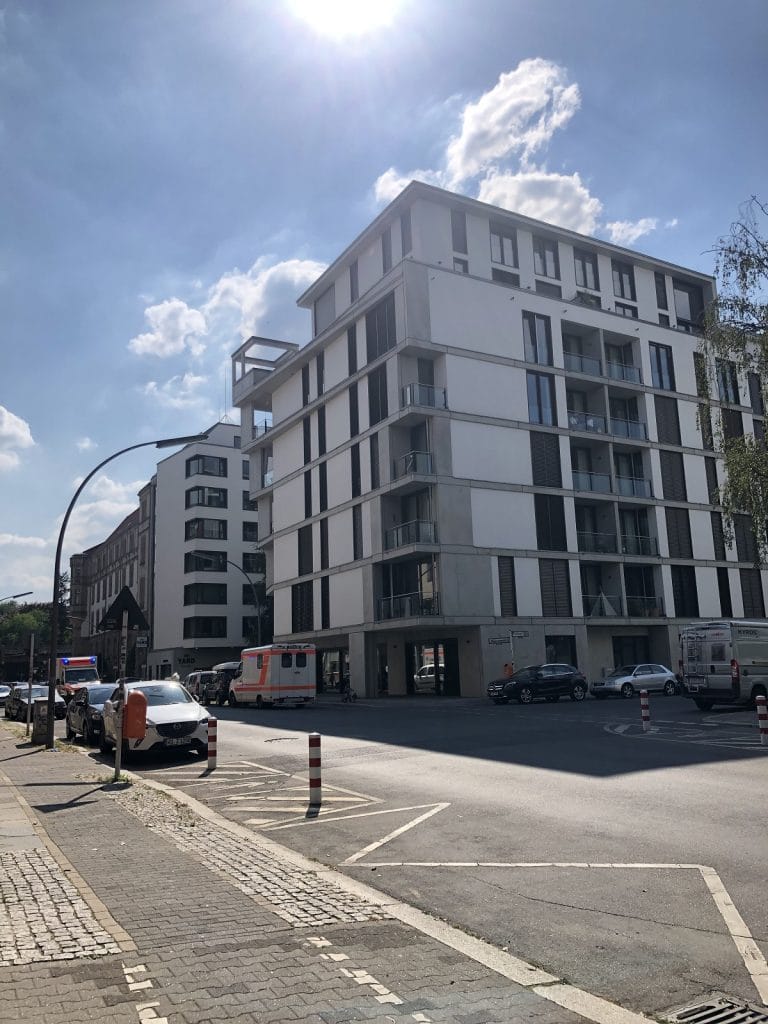
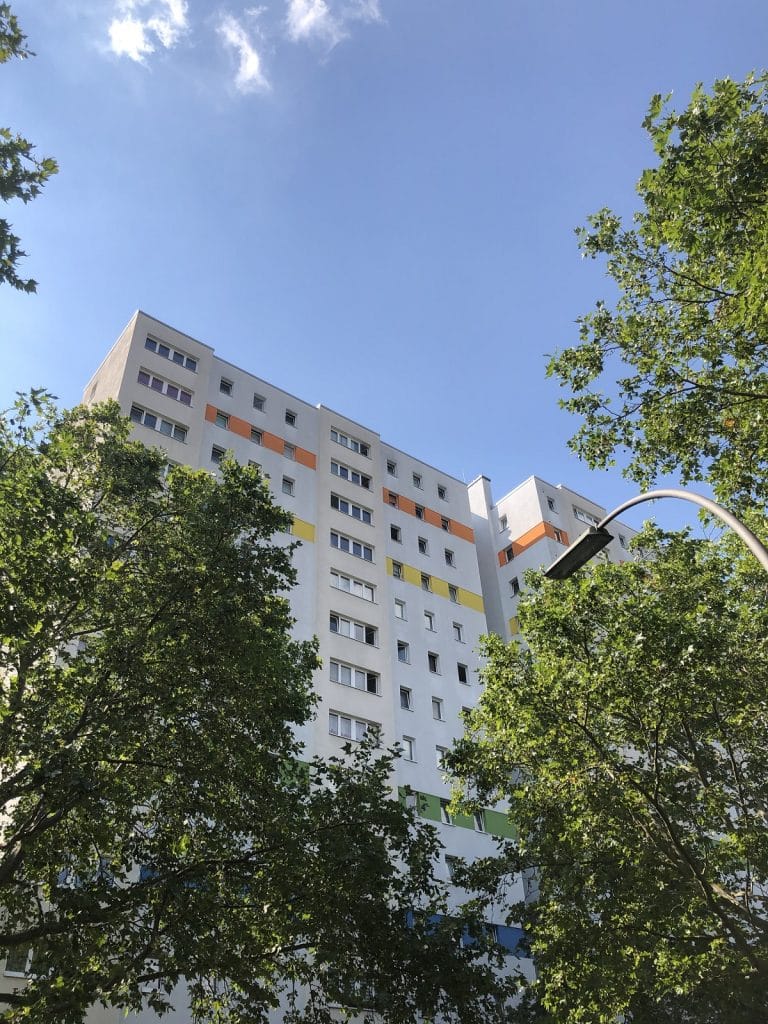
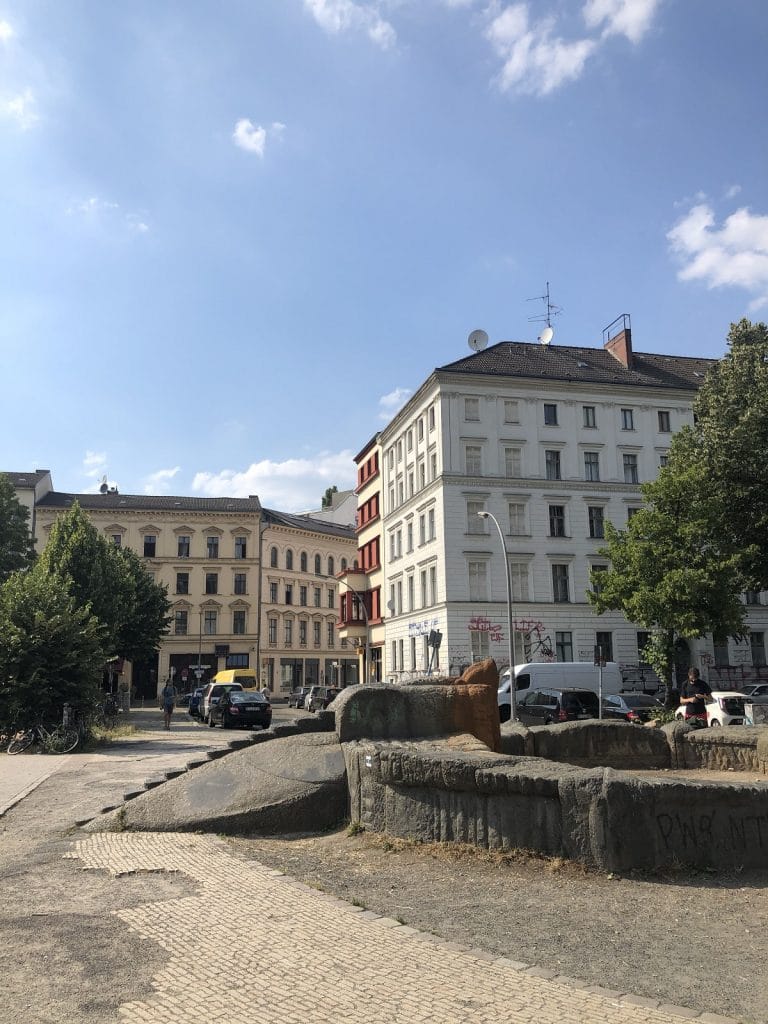
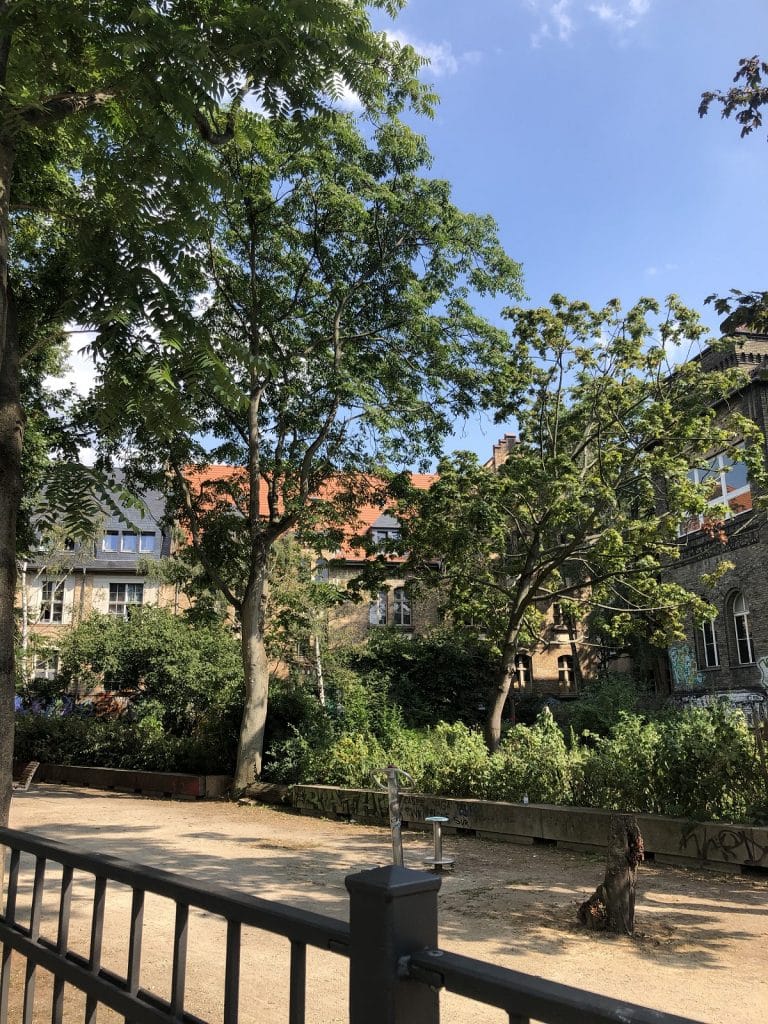
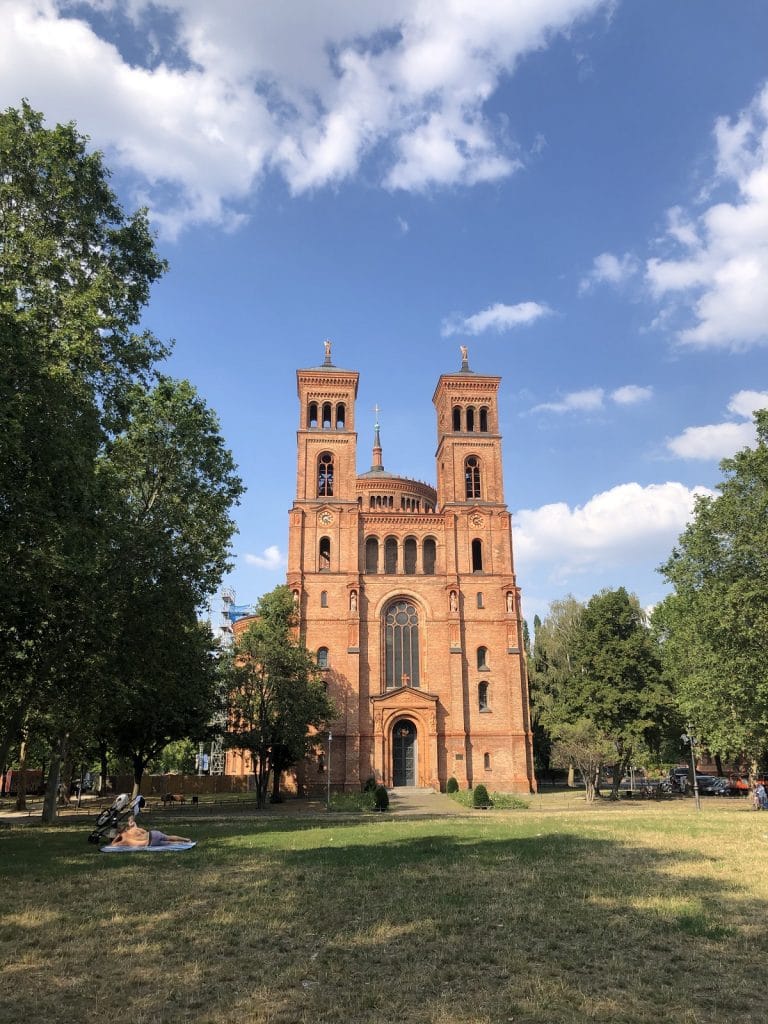
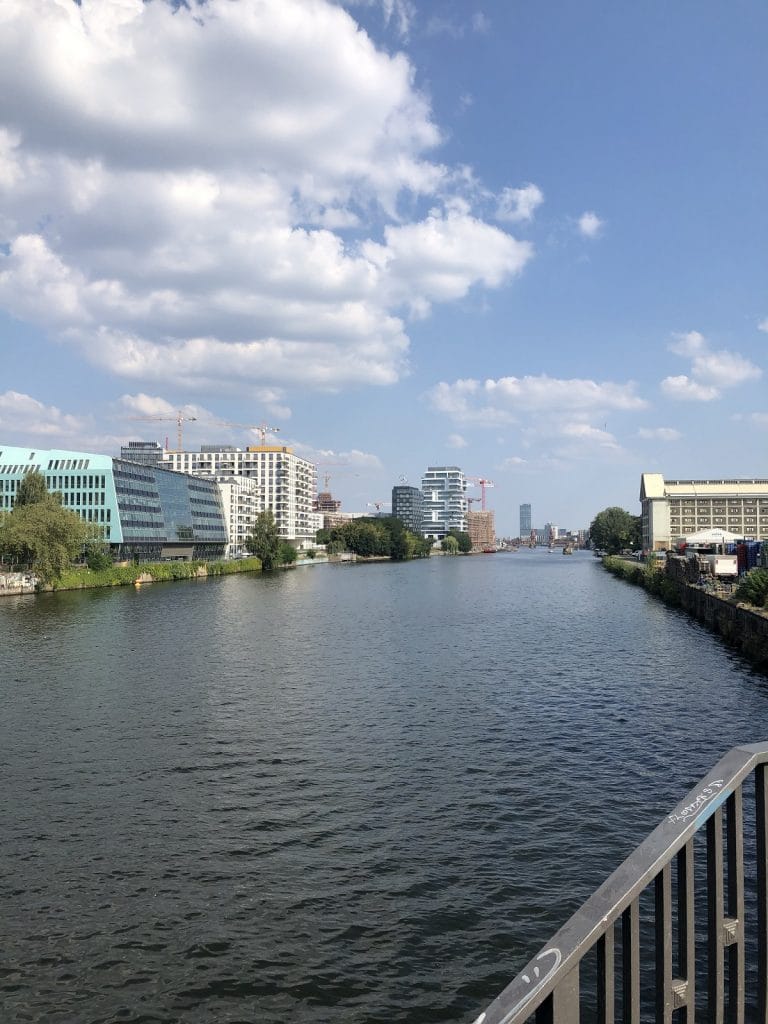
The Kreuzberg section of the mix is the longest and most intense; a document of techno’s recent return to a harder, faster, darker sound after years of dominance by slow, soft, minimal bullshit.
In my recent interview with Chris Liberator, he praised this new techno era in terms that I full agree with personally:
(Acid) techno’s been welcomed back into the fold, and what’s happened is you’ve got these DJs like Amelie Lens and all these new big famous, uber-famous DJs, have suddenly just kicked the lid off the box of techno and started playing all this old trance, old acid techno, and mixing them up into their sets …
Those guys have never had that snobbishness, they’re making real techno techno, and techno is getting harder again …
Techno producers incorporating 90’s influences like hardcore, acid, and hard trance into their modern productions, and also turning the bpm’s up?
I am here for this!
So over the last few years I’ve gotten quite into this stuff, buying a fair amount of it on vinyl, so this section is all about delivering what the rest of the mix was building towards – pounding, dark, atmospheric techno. The sound of dark sweaty rooms illuminated by lasers and strobelights. Writhing bodies stomping out mutant aerobics, glimpsed through great fog banks of dry ice. Heads down, eyes closed, limbs pumping.
Of course, I wanted to make the transition from the previous section subtle, so first up is Minneapolis’ Paul Birken, whose wonky acid track is a more militant cousin to the Mella Dee track that precedes it. Next up is a slice of poundingly minimal industrial techno from Berlin Brummie Rebekah, that seques into a the spiraling riff and pounding kicks of Hector Oaks, a Spaniard who is well known for running the Herrensauna parties in Berlin.
I actually mixed out of his track pretty quickly into ‘Untitled’ by Works Unit, which came out on Ellen Allien’s new UFO Inc label. This is the point at which this section of the mix really starts to hit its distinct sound – crunching percussion, doomy riffs, atmospheric sounds, high intensity.
This is a sound that I really enjoy listening to and playing – I love the energy and power of it. There are a lot of Berlin and Berghain connections in this section of the mix, with tracks and remixes from people like Rebekah, Hector Oaks, Nur Jaber, Kobosil, Ellen Allien, Klangkuenstler, Inhalt der Nacht, Dax J, and other stuff from local labels like R-Label Group and UFO Inc. My personal highlight is Berghain resident Kobosil’s incredible remix of ‘Rigid’, which overlays a stunning Velvet Underground-style vocal over pounding techno beats.
I’ve tried to keep it interesting over the twenty tracks, so that even though there is a certain vibe consistency, the specifics change, so that for example I play ‘War Pigs’ by Nur Jaber and then ‘Skeemask’ by Dutchman Remco Beekwilder, two very dry, percussive stompers, and then follow it up immediately with the rolling bassline and 90’s influenced trance riff of ‘Balthazar’ by Klangkuenstler, or there are two very atmospheric, hypnotic tracks by Matasism and Inhalt der Nacht that are immediately followed by the no-nonsense wall of noise that is ‘Zephyr’ by Dax J, which is followed by the reimagined hard acid techno/trance of ‘Blutsturz’ by In Verruf on Kobosil’s R-Label Group. The end of the section switches things up again by moving into the new French sound courtesy of Airod, Hadone, and Anethat. This is a sound that parties like Possession in Paris have been championing, all hard kicks, shuffling percussion, and waves of atmospheric sounds that manage to be both euphoric and melancholy at the same time.
Friedrichshain
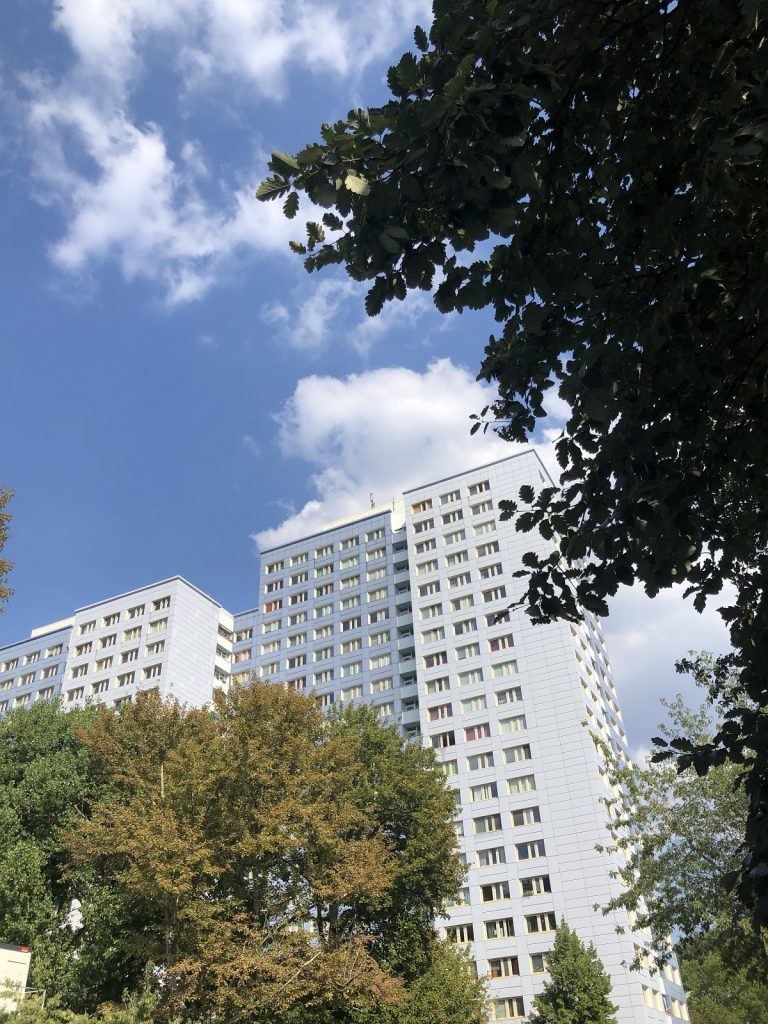
As I stood on the Schillingbruecke looking out on the Spree I was overcome with a deep sense of joy (and relief) – I was almost there!
Crossing the bridge I was for the first time in the day stepping foot into what was once East Berlin, the short walk I had just made something totally impossible for most people to do only decades before. The river was an impassable barrier between the capitalist and communist worlds, and today it can be traversed in just a few short minutes.
Arriving on the other side of the river I cut through a street tunnel under the edge of Ostbahnhof station, and then was greeted with a very typical East Berlin scene – hulking Communist-era blocks, standing against the sky like giant concrete monoliths. This is one of the signal architectural differences between the former East and West, the sheer number and density of Soviet-style housing blocks across the former east Berlin, and how centrally located they are, with these blocks being just a stone’s throw from the main station in eastern Berlin. There are some big concrete housing projects in the former West, but they are not a standard part of the architectural mix, meaning that the typical streetscape is very different.
And I have to be honest here, because personally I very much prefer the west, and I basically never leave the boundaries of the old West Berlin. I guess I go to the former east maybe every month or two, if that, and usually just over the river into Friedrichshain from my office in Kreuzberg. It’s not like I am going to the deep east, to places like Lichtenberg or Hellersdorf or Marzahn, all of which have a totally different look and feel from where we live in Wilmersdorf. The one time we went to the Gaerten der Welt in Marzahn we hit a certain point on the S-Bahn where my wife just laughed and said, “I’m back in Warsaw!”, because the built landscape was so stereotypically Eastern Bloc, of a style that is familiar from basically East Berlin to Vladivostok.
But then others feel differently about the relative merits and charms of the formerly estranged halves of Berlin – my first boss in Berlin was a born-and-bred East Berliner from Pankow who told me that he would only go to the west a few times a year!
Anyways, by this point I was so close, that literally all I had to do was drag my carcass a few more streets and I was there, staring at Berghain’s exterior. The day had started with the ridiculous idea of “I’m going to walk from Charlottenburg to Berghain on the hottest day of the year”, but I had done it. The mission was accomplished!
So a modest celebration was in order; fortunately there is a little beer garden round the back so I went and ordered myself a beer and a big bottle of water and even though I am not much of a beer drinker these days, man, this was possibly the single most refreshing beer I’ve ever drunk, or maybe ever will. It hit spots that I didn’t know could be hit.
Having drunk the beer and skulled the water I figured it would be a little silly to hang around by myself, so I got up, walked around the building, took a few pictures on my phone and headed off to the last stop, Mitte.
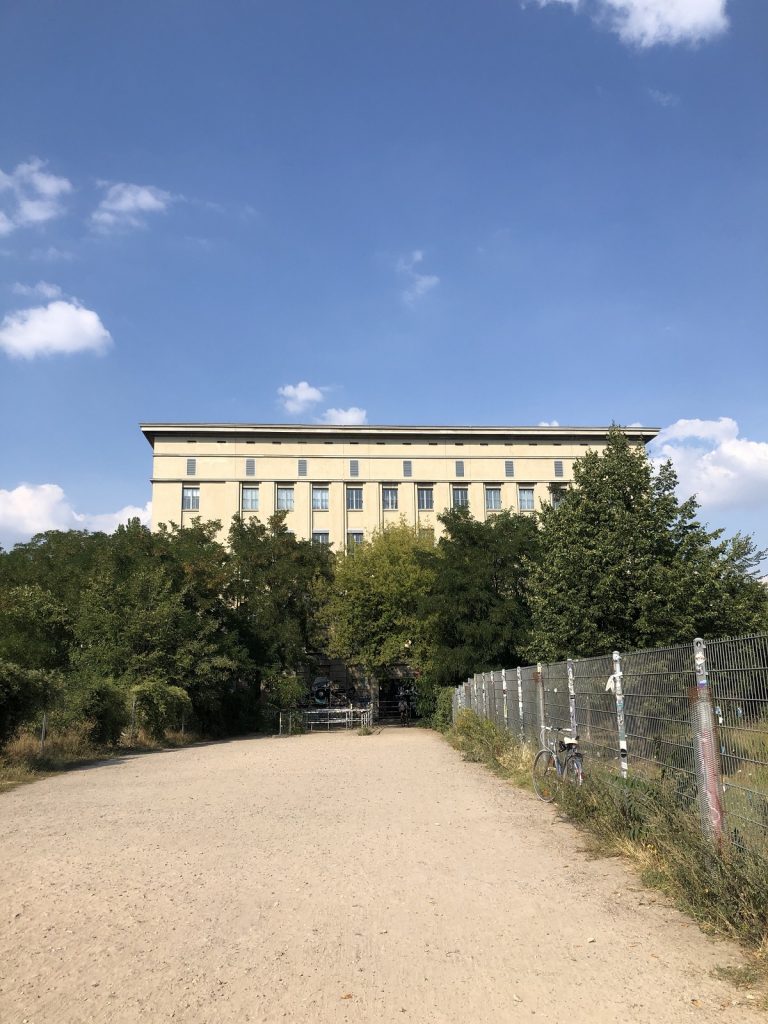
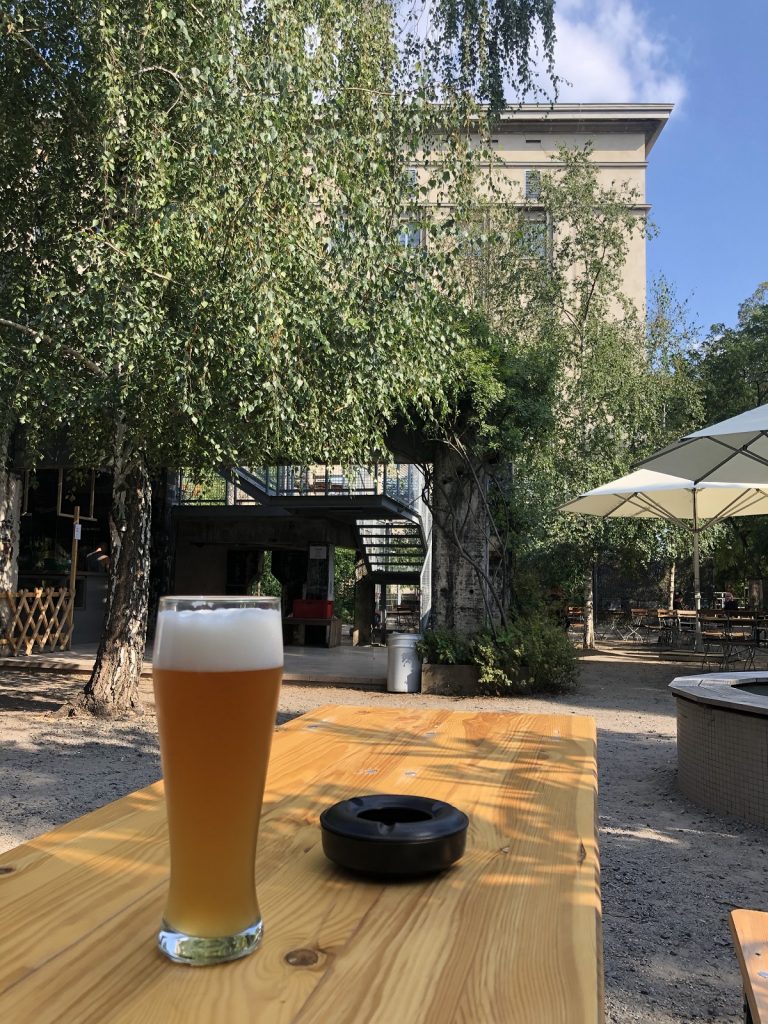
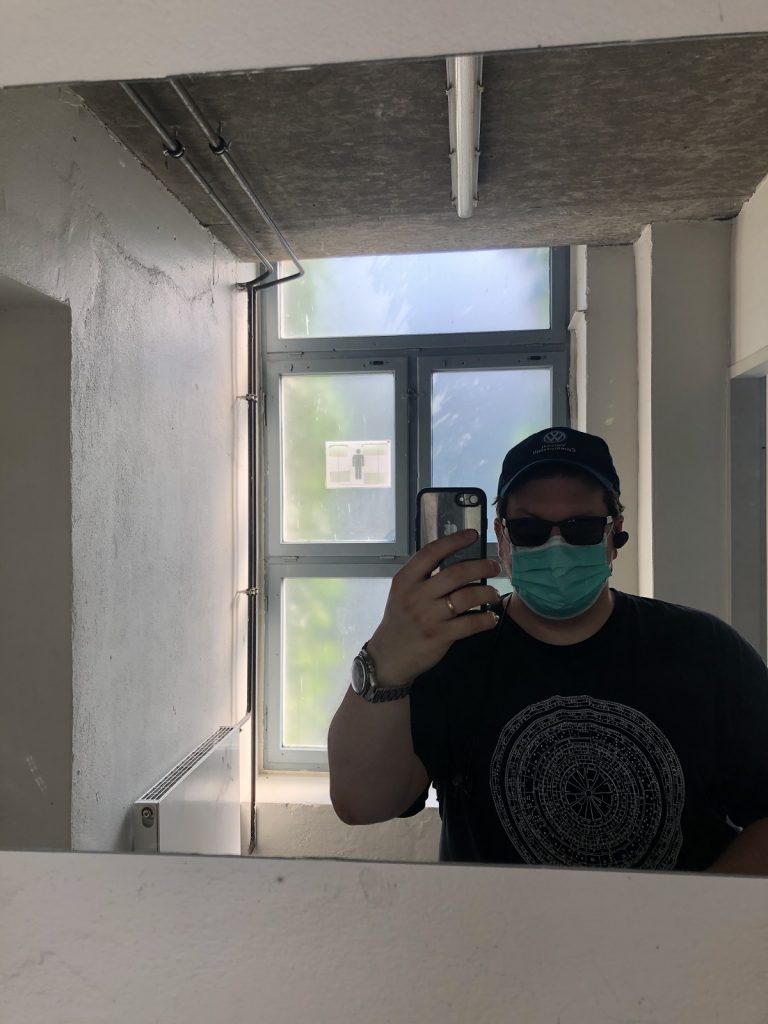
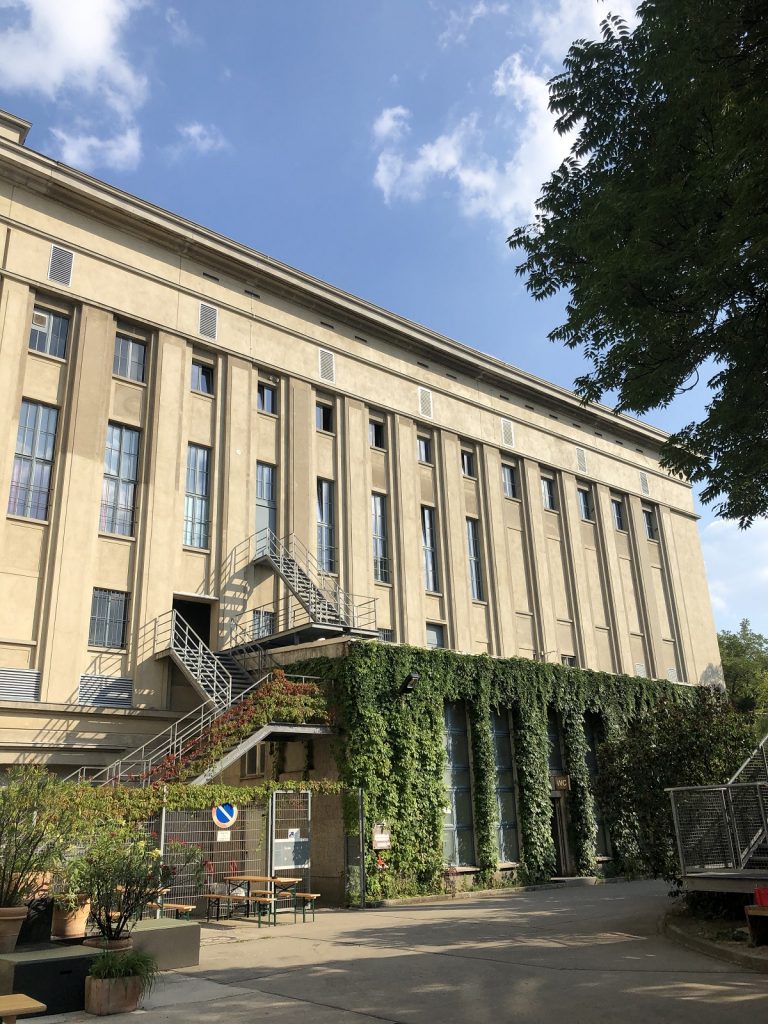
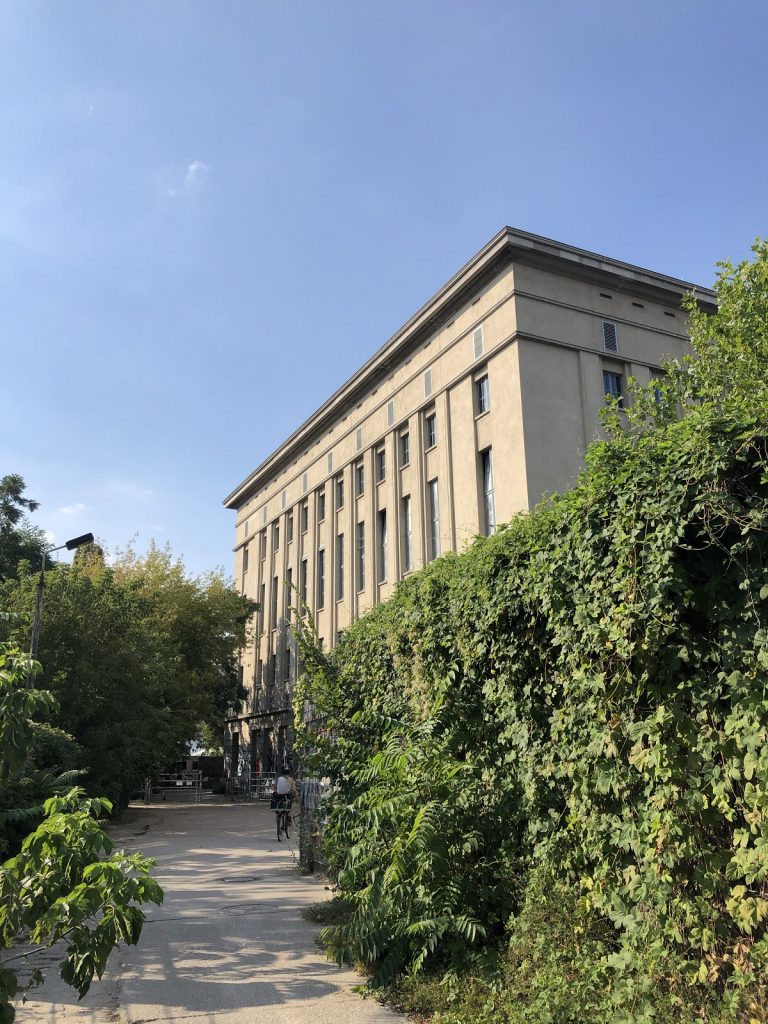
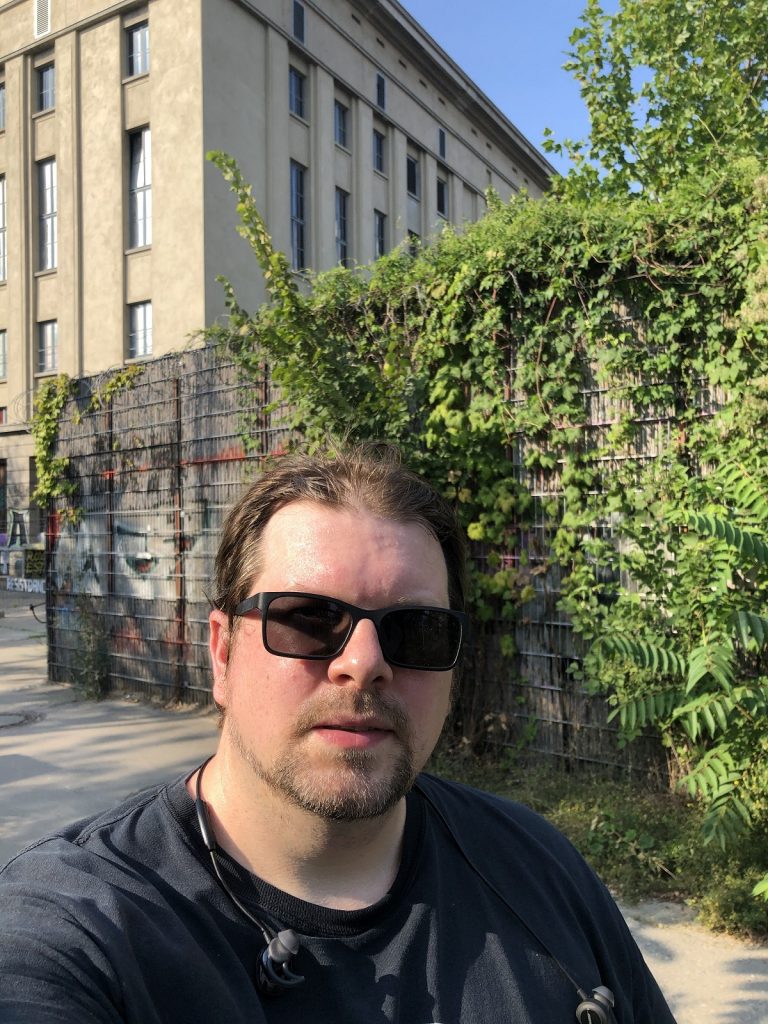
The second to last section of the mix is a little bit of a special one for me. Over the last few years I’ve become very interested in the output of what has been called the ‘Copenhagen fast techno’ scene, which is basically a group of producers from the Danish capital who have set out to make 140+ bpm techno, drawing on 90’s influences to make a sound that harks back to the trance and techno of that halcyon period while still sounding completely contemporary, even futuristic.
This old-yet-new sound is not a happy accident, but a deliberate choice, as described insightfully in Resident Advisor by Joel Krozer, a mastering engineer who works with many of the artists:
“The most prominent characteristic of this music is the contrast between dusty, older sound design aesthetics and modern mixing and mastering techniques, which we use to make the records unmistakably new-sounding,” he told me. “The fast tempo can at times dictate what kind of sounds will work in an arrangement and can impose certain limitations. For instance, it generally wants the kick drums to sit a bit higher up in the frequency spectrum than in slower techno, but we make sure not to lose the lowest octave, all the way down to 20Hz. There can be a lot of relevant musical information even as low as 20-something Hz and I won’t shave it off unless it’s absolutely necessary. As humans we can’t actually hear those frequencies but we can feel them on a soundsystem with extended low-end.
“As for the tempo, it has an almost ominous effect on the listener because it creates a kind of roar, especially in a setting with warehouse acoustics, because the notes are so closely stacked together and are being washed out by the reverb around it. When I’m mastering this music I try to find the right balance between making the synths wider and therefore bigger than is natural, and I often push the low-end further than is common, while keeping the transients of the drums snappy so they don’t get drowned out on big systems. Traditionally engineers try to separate kick and bass as much as possible, but with this music we often intentionally make the two compete to create tension. This can potentially lead to problems, but I attend a lot of the parties to check the masters and make sure that the balance works.”
This sound is fast, linear, and hypnotic, and I can’t get enough of it. You know me – I love fast music!
So with the tempo already established at a nice and pumping 145 bpm, this section is all about showcasing some of the artists from this scene, and their diverse output, from the more minimal tracks from Repro, Ibon and Rune Bagge to the euphoric overload of the two Funeral Future tracks and the clearly UK hard house influenced final two tracks from Schacke. By the end of this section I’ve pushed the tempo up to 150 bpm and things are really rocking, ready for the grand finale.
Mitte
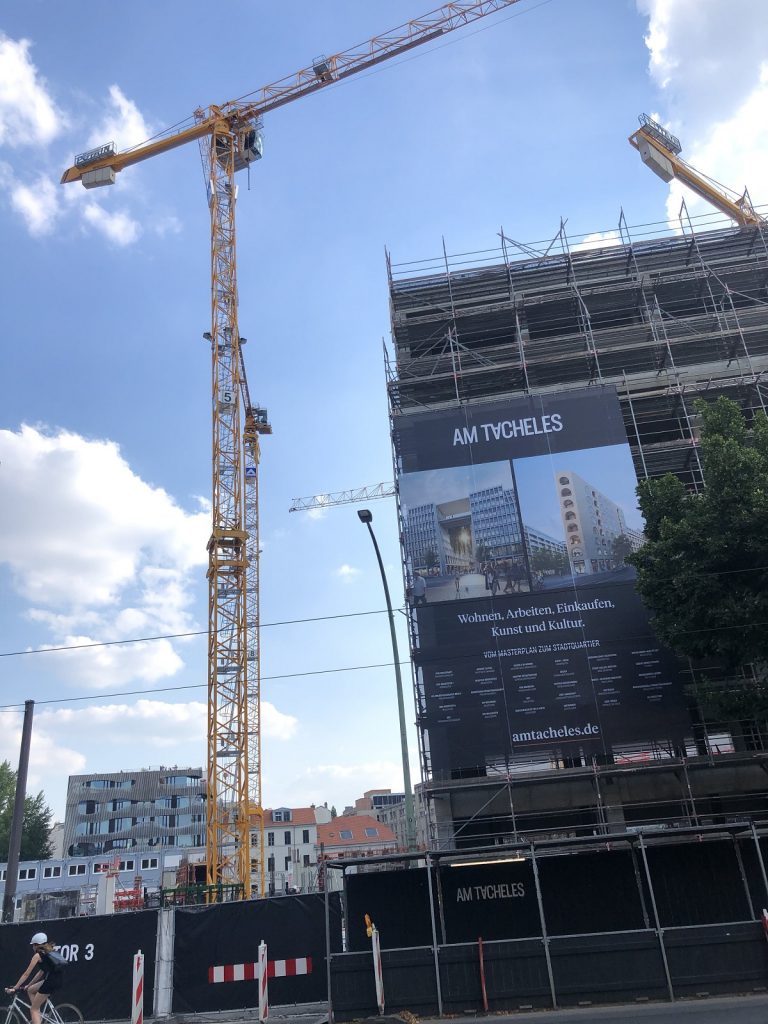
The original plan had been to walk from Friedrichshain to Mitte, but honestly by this point both the spirit and the flesh were long past willing, so I trudged to the Ostbahnhof and took the S-Bahn a few stations west to Hackescher Markt, where I hopped out and walked up the Oranienburger Strasse, another street that has become symbolic of the changes that have swept Berlin, especially the former East.
After the wall fell, much of East Berlin became heavily depopulated as people left for the west of Germany, something that was especially pronounced in the inner city districts like Mitte, Prenzlauer Berg and Friedrichshain, all of which still had a large amount of older pre-war housing stock, much of it in a shocking state of disrepair. With the collapse of communism who actually owned these buildings was not actually clear, so in the 90’s there was a huge boom in squatting, as described in this article on the Slow Travel Berlin site:
On Mainzer Straße, there were 11 buildings squatted. Visually and culturally this was something new. The part of the street with squatted houses was 200 meters long. On the street there were several different groups. One house, for instance, had transvestites. The boys walked around with very hot female clothes. It looked like in a movie. They were wearing make-up and blonde little curls and short skirts, it looked really crazy. Other houses were really militant where they were always wearing black clothes and hooded jackets.
All the houses were draped with flags and banners. Every evening, people would sit in front of their houses eating, chatting, and drinking. On the other side of the street, normal people were living. The problem was that they had to get up early to go to work. Most of them didn’t dare tell the squatters to please be quiet. If they called the police, the police said: “We are not stupid, we are not going in there.” A street where the police doesn’t go? No state can tolerate this.
Then there was the escalation. It started with the eviction of a squatted house in Lichtenberg, and there was a demonstration in Mainzer Straße. A radical group of squatters from Mainzer Straße blocked Frankfurter Allee. The police tried to remove the barricade, and there was a confrontation. This escalated for three or four days. After that, Mainzer Straße was evicted.
Oranienburger Strasse was the site of one of Berlin’s most famous squats, Tacheles, a massive structure that was originally built as a department store in the 1900’s in what was then one of the main Jewish quarters of Berlin. The building later went through various incarnations before becoming a trade union office during Communism. After the Wall fell, it became a massive squat, packed with artists’ studios, cafes, galleries, and all kinds of other creative endeavors. It hung on for 20 years until 2012, but with gentrification heating up in Berlin, and its location at the junction in the heart of the reunified city causing developers to have visions of dancing buckets of cash, it was inevitable that it would be closed down.
As I lurched up Oranienburger Strasse I noted with grim irony that on its former site they are building a bunch of super boring glass boxes called Am Tacheles, with the tagline ‘Live, Work, Shop. Art and Culture’. Whatever this final result will be, it’s not going to be anything even vaguely like the old Tacheles, so it’s really ridiculous, if predictable, for the developers to pretend that their dull glass cubes have anything to do with art or culture.
But enough griping – salvation was at hand! I’d heard that the new pizza place Magic John’s on Oranienburger Strasse was serving real New York-style pizza by the slice, and I figured that on this day of all days I would love to have a slice. I walked through the door, had a look, smelled it, and felt a deep deep sense of nostalgia for New York slice joints, so of course I ordered myself a cheese slice to check the foundations.
For those who aren’t familiar with New York City pizza culture, the humble cheese slice (the plain one, just cheese and sauce), is the best way to gauge a new pizza joint. If they can rock the cheese slice, that means the other stuff is probably pretty good too. And man, this was not just good, it was great, it instantly flooded me with nostalgia for drunkenly eating slices on street corners, hunched over so the grease drops on the street and not on your clothes.
I had the opportunity as well to chat with the owner, who, although not a native New Yorker, had spent many years in New York and wanted to bring the real texture and flavor of New York pizza to Berlin, including commissioning The Sausage Man Never Sleeps to produce a real American-style pepperoni sausage, of a type that is generally impossible to find here.
Great guy, great pizza.
And sure, were you expecting when you started reading this blog post that it would turn into a moon-eyed pizza advertisement?
Probably not, huh?
But still, it was great, and yeah, of course I ordered two more slices!
Then I staggered to the S-Bahn and headed home, exhausted but happy, to collapse into bed for a deep and merited sleep.
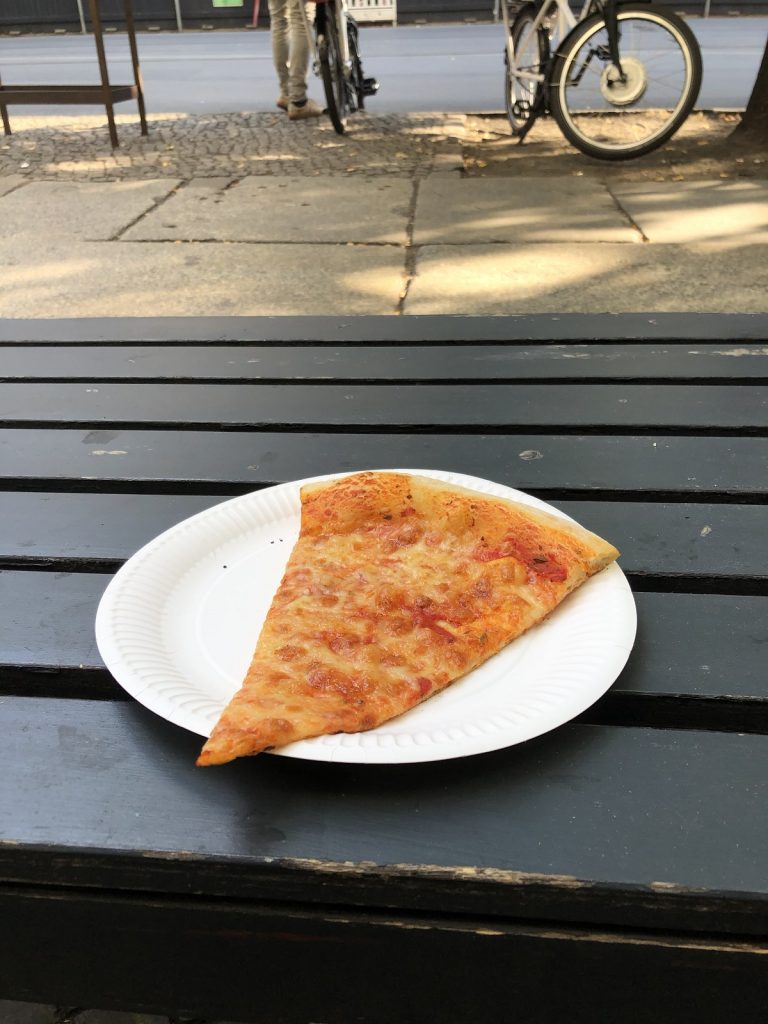
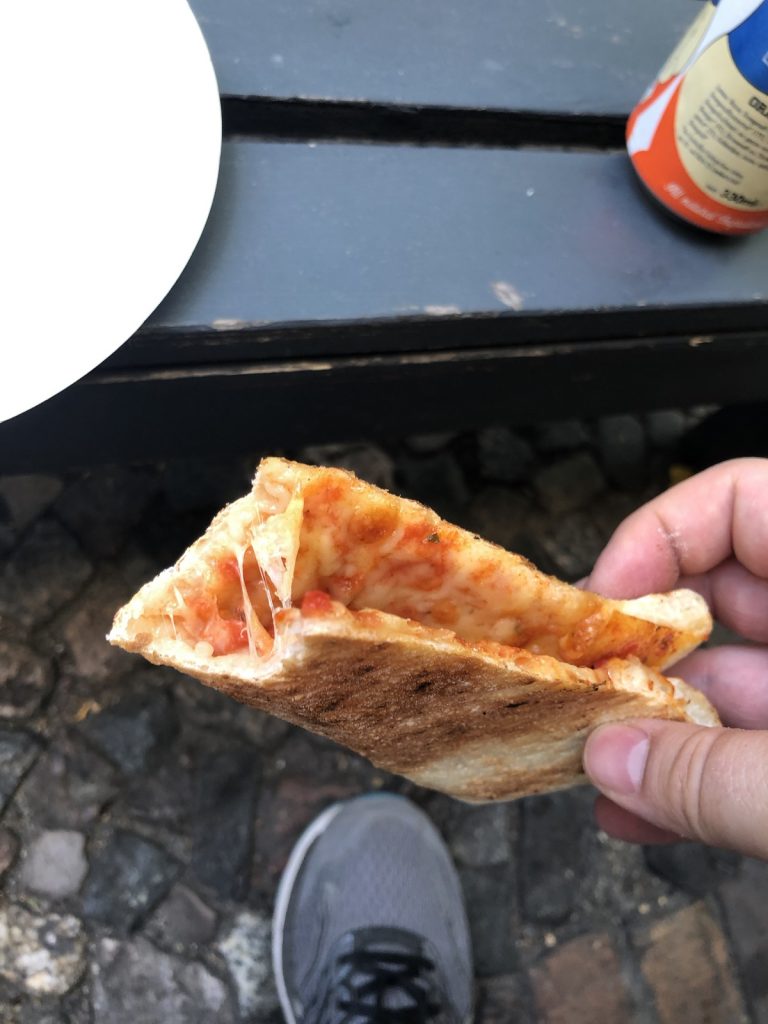
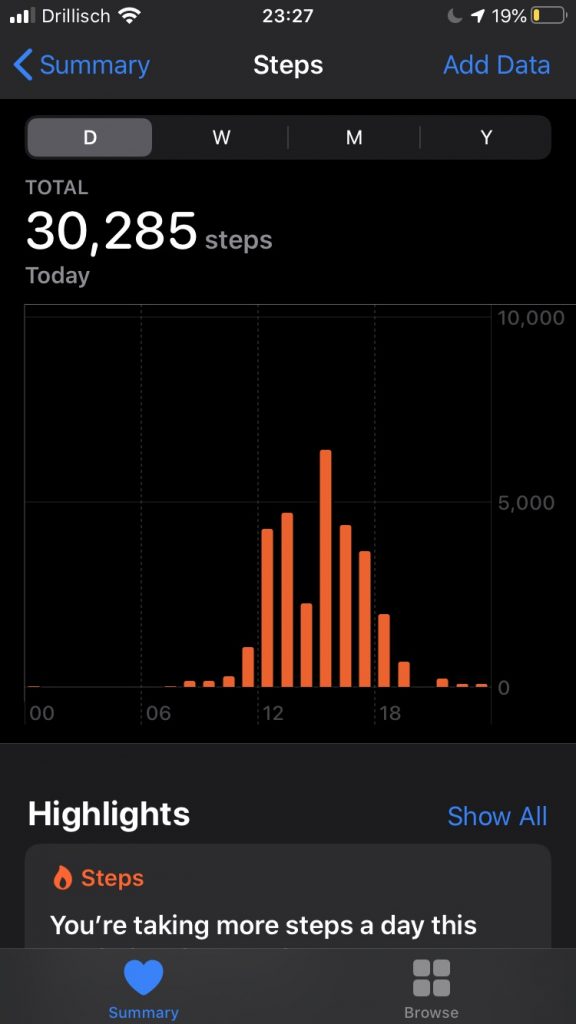
Berghain opened in 2004, so the the theme of the sixth and final section is techno from Berghain’s early years, a personal favorite as techno eras go. It was so much fun to dig into my collection and pull out tracks from 2004 to 2006, a period when techno was really alive with groovy, funky, chunky tracks. True party music! In all honesty, I don’t think these were the kinds of tracks that were being played in Berghain back then, as I guess it was more slower minimal stuff on the menu then, but, well, I know what I prefer, so there you go.
There is another way that this final section stands out. A pretty standard programming technique that I have used dozens of times is to constantly increase the tempo through the mix, so that the end of the mix is quite a bit faster than the beginning.
A good example of that process would be my 90’s Rave Revival Promo Mix, which went from 135 to 175 bpm in just 20 tracks. However, one thing that I have never done before is to actually slow down during the mix. However, here I had a perfect opportunity to try out deceleration as I wanted to play funkier stuff, but a lot of the tracks that I wanted to play only pitched up as far as 145 bpm.
A conundrum!
My solution was to mix from the fast-paced Danish techno into a very banging DJ Rush remix at 150 bpm and then immediately start dropping the tempo by about 1 or 2 bpm per track so that within a couple of tracks I was down to 145 bpm, a perfect pace for the hard groovey sounds from John Thomas, Technasia, Boriqua Tribez and other,and then after a few more back tracks I had pitched it even further down, settling at around 140 bpm, which although still reasonably pacy is a speed at which the listener can really vibe off the joyous euphoria of ‘Incident’ by Joris Voorn and the Killa Productions remake of ‘Good Life’.
After almost four hours of pumping 4/4 beats, I finally close things up with the magical ‘Urban Haze’ by Basement Jaxx, one of my favorite ever beatless tracks.
All through the day, this mix was my companion, metronomically pushing me forward. This is a very special mix for me, and I am delighted to share it with you – I hope you enjoy listening to it as much as I enjoyed making it!
